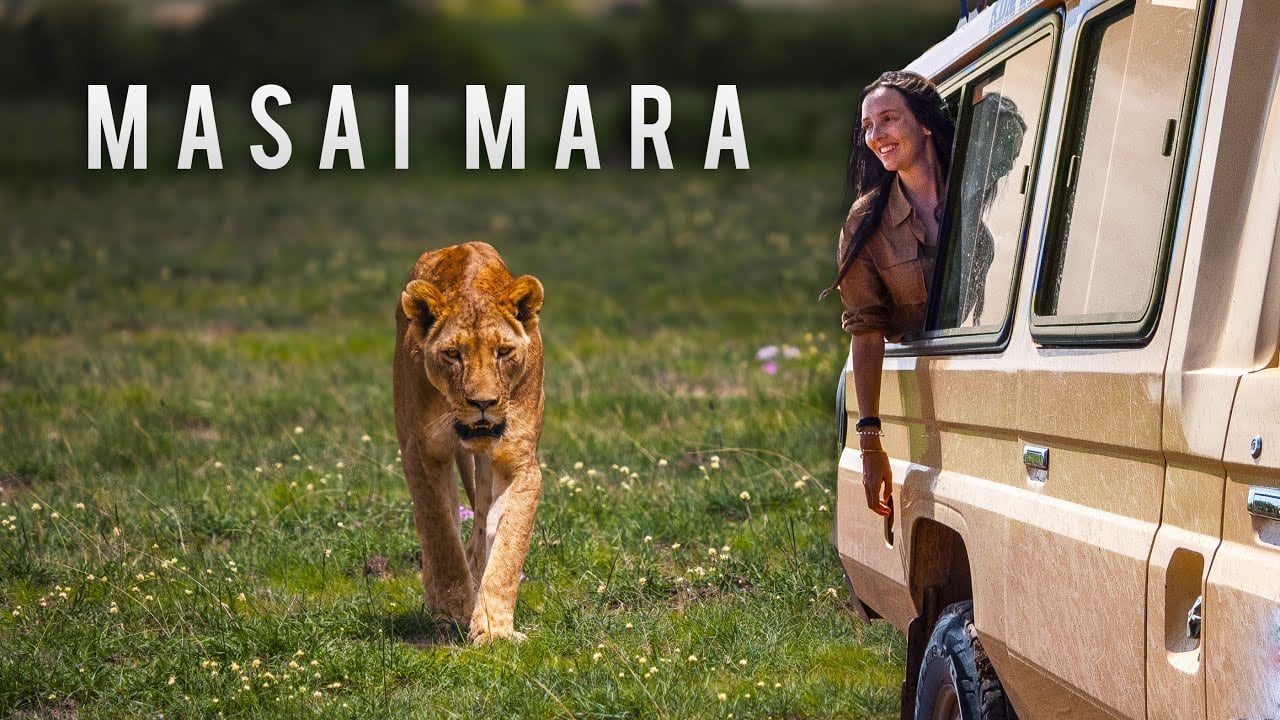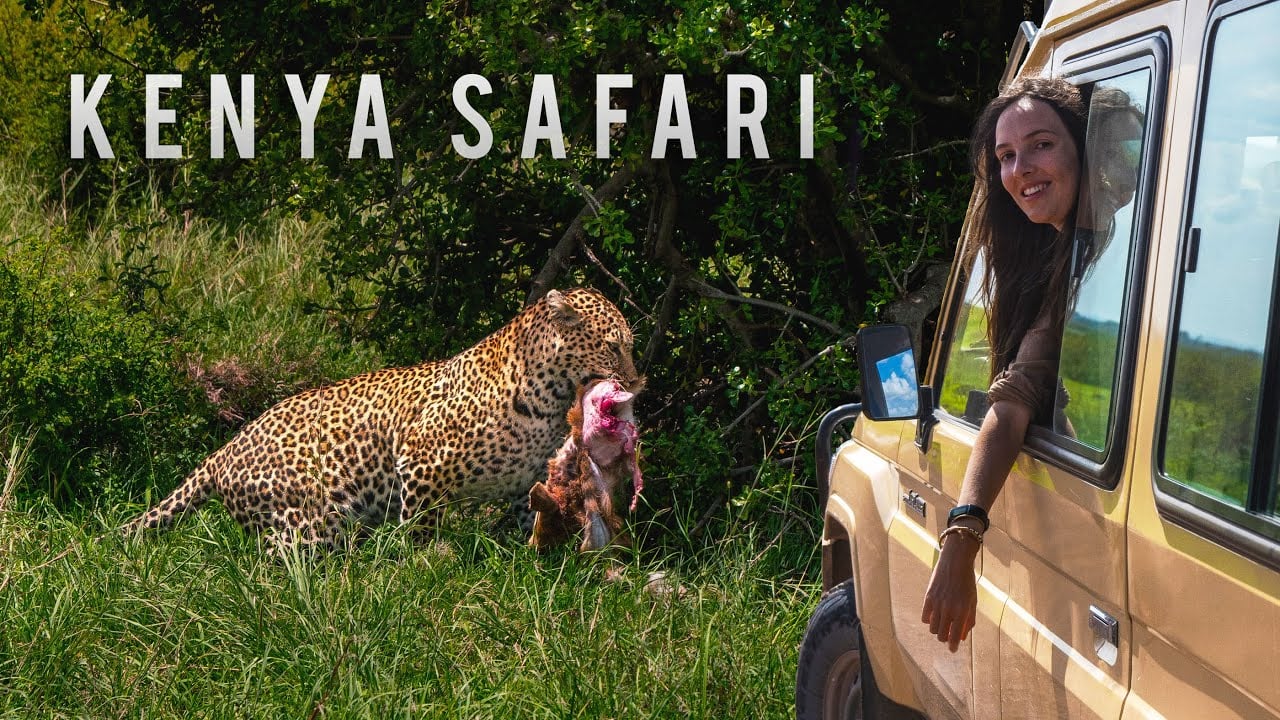Watching four tiny cheetah cubs pounce on their mother and spotting my first ever black rhino are just two of the many safari experiences in Kenya that took my breath away.
Kenya is known as the birthplace of safari, the word translating to ‘journey’ in the national Swahili language. It’s no wonder then that Kenya is one of the best places on earth to go on safari.
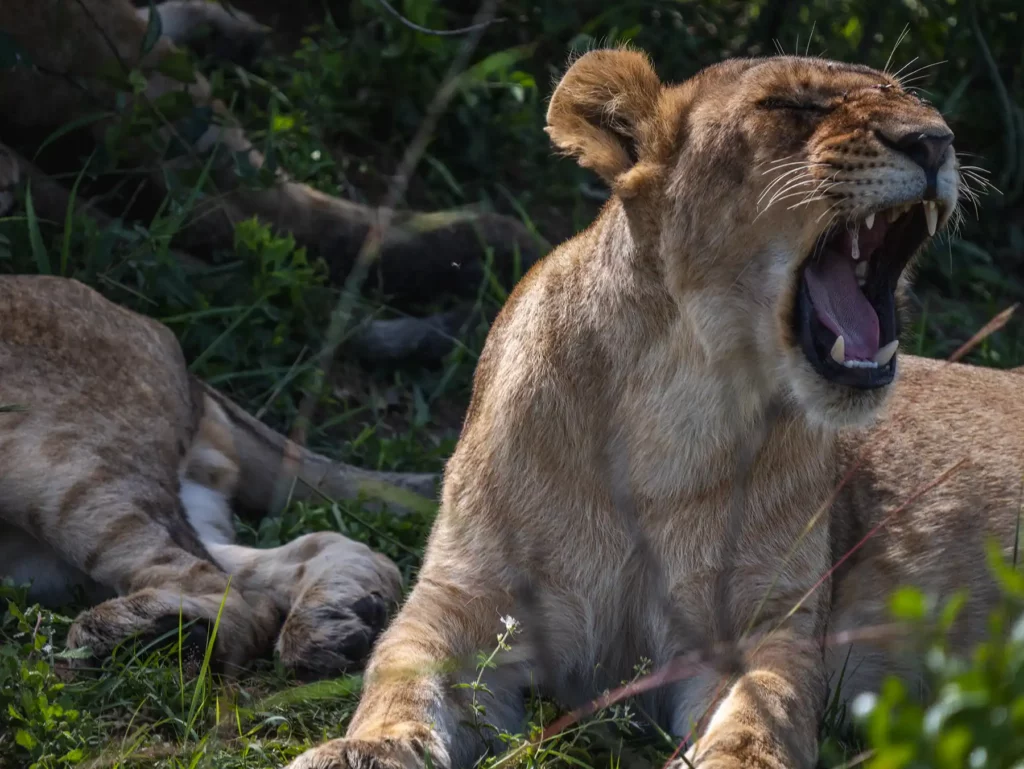
Home to the famous Big Five (lions, leopards, elephants, rhinos and buffalos), spread across an array of pristine national parks and reserves, Kenya has something for every safari-goer.
The Maasai Mara is one of the most famous reserves in the world and is a fantastic place to spot Africa’s big cats as well as try to catch a glimpse of the second largest terrestrial mammal migration on earth – the great wildebeest migration.
Then you have Amboseli, home to Africa’s last remaining Big Tusker elephants who can be witnessed marching in front of the towering Mount Kilimanjaro.

With so much to see you might be wondering if a 3-day Kenya itinerary will cut it?
Yes – it’s certainly possible to have an incredible 3-day safari and it’s a pretty popular option.
However, If you have time, I would highly recommend adding a couple of extra days to give you a 5 day Kenya itinerary, allowing you to see more of Kenya’s parks and reserves.
If you’re not limited by time, then my ultimate recommendation is to embark on a 7-10 day safari itinerary. This allows you to see all of Kenya’s highlights at your own pace.
The main reasons a 3-day itinerary can work well in Kenya are:
1. The high density of wildlife within Kenya’s prime safari destinations gives you a good chance of seeing a lot of wildlife in a shorter period of time. However it’s still important to note that wildlife can be unpredictable and the longer you spend on safari the greater your chances of incredible sightings.
2. The parks and reserves have at least one airstrip, giving you the option to fly from destination to destination, saving you lots of time that would otherwise be spent on the road. Flights are typically between 40 minutes and an hour in length.
3. Many of Kenya’s wildlife destinations are pretty close together (a couple of hours by road) meaning that on some 3-day safari itineraries, you can visit multiple destinations.
4. It’s straightforward and popular to incorporate a 3 day safari into a 5 day safari and beach itinerary with 3 days of safari followed by 2 days of beach in Diani
I’ve written a more detailed answer later on in this guide.

In this article I’m going to take you day-by-day through my five favourite 3-day Kenya safari itineraries. I’ve compiled these itineraries based on both my personal experience, copious amounts of research and insider tips from on-the-ground safari guides.
I’ll provide guidance on the best time to visit Kenya for each itinerary and share tips and tricks including how to avoid some of the mistakes I made on my own safari.
I’ve also included helpful guidance on the costs of a Kenya safari and how to find and book the best safari tour company for each itinerary.
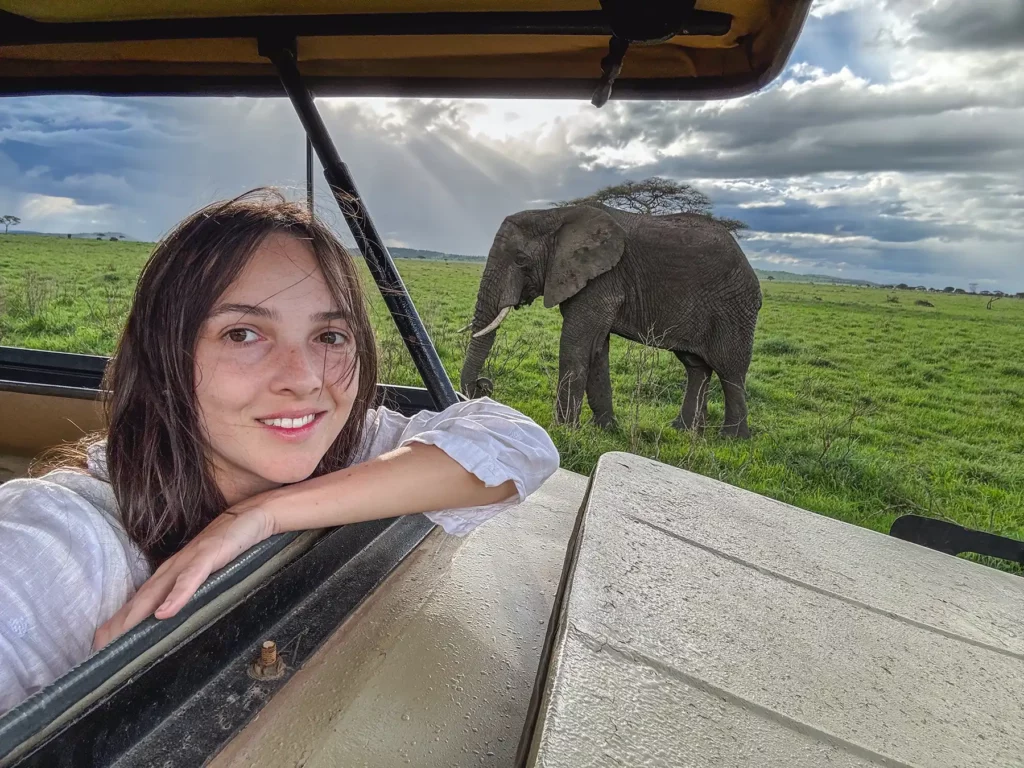
Embark on the Safari of Your Dreams
Save time and ensure an incredible safari experience by getting quotes from my recommended local safari companies
I’m here to make booking your perfect safari quick, easy and risk-free.
Join the rapidly growing tribe of over 1,000 travellers who’ve booked their dream safari using my insider tips and recommendations.

It takes under 60 seconds to fill out the form and in under 48 hours you will receive multiple, no-obligation proposals from my favourite local tour operators with glowing online reviews.
Get your free no-obligation safari quotes and my top safari tips and recommendations
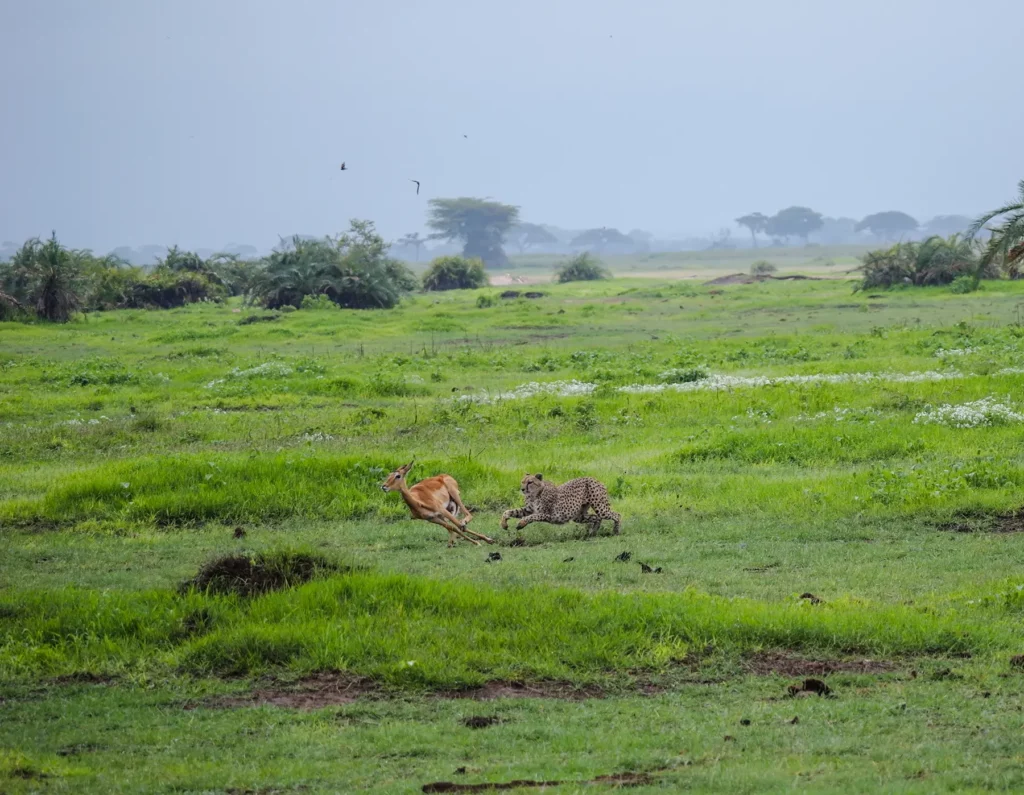
Five different 3-Day Kenya Safari Itineraries
I’ve written about my five favourite 3-day Kenya itineraries below. They feature safari destinations in the south and east of the country, which are all easily accessed from Nairobi.
This keeps travel time to a minimum so you can focus on the wildlife. Many of these multi-day Kenya trips can be enjoyed by road, saving you money on internal flights.
The most iconic itinerary is the Maasai Mara safari, which is a great choice if it’s your first time in Kenya. You can either drive in or fly, depending on your budget and time constraints.
Some itineraries feature the southeastern national parks of Amboseli and Tsavo West. These are perfect if you want to explore wilderness landscapes away from the crowds of the Masai Mara.
For a change of scenery, the Great Lakes trip offers different wildlife experiences against the spectacular backdrop of Naivasha and Nakuru.
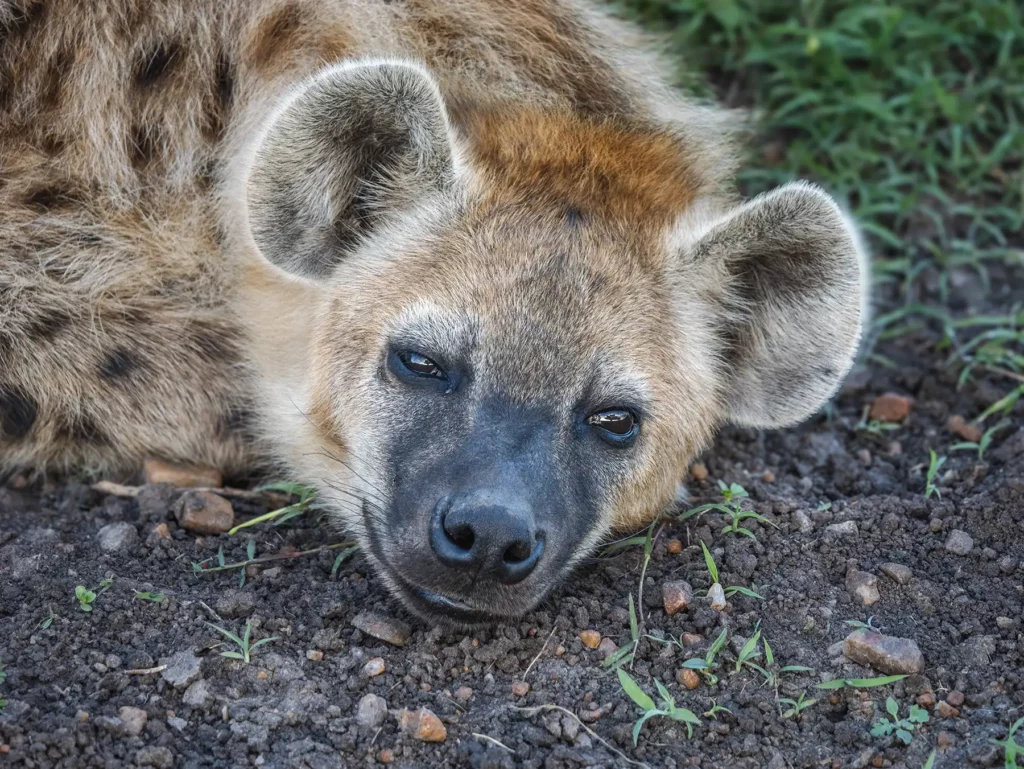
Option 1
3 Day Masai Mara Safari Itinerary
This adventure takes in the best of the Maasai Mara in just 3 days. It’s a popular route and a favourite with first-time visitors to Kenya who want to experience one of Africa’s most famous safari destinations.
As this is a driving safari, you won’t need to fork out for expensive internal flights. The reserve is one of the closest to Nairobi, so transfers are relatively short, giving you longer out on safari.
The Masai Mara is home to some of the cheapest safari accommodation in Kenya, so it can be a great choice for budget travellers (if you visit in the first half of the year – but more on that later on in the article!). Of course, there are plenty of luxury lodges too, so there’s something for everyone.
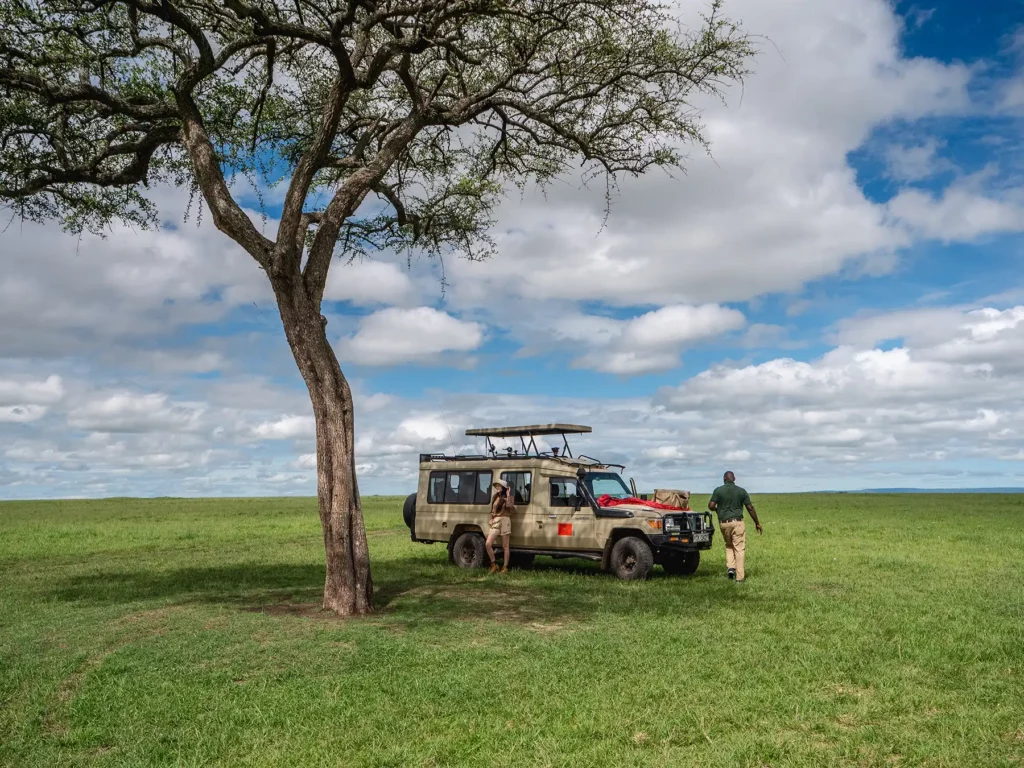
Quick Facts
Average driving time: 4 hours per day
Best times of year: Come between July and September for dry weather and to witness the Great Migration. Between January and March, you will experience a few rain showers, but this is the best time to see dramatic storms and newborn animals.
Itinerary Map for Masai Mara Safari Itinerary
Itinerary starts and ends in Nairobi.

Day By Day Breakdown for Masai Mara Safari Itinerary
Day 1: Maasai Tribe
Driving time (excluding game drives): 6 hours
Today you will leave the bustling city of Nairobi and journey to the world-famous Maasai Mara National Reserve. The morning will be spent on the road whilst the afternoon will be spent visiting a Maasai tribe.
Itinerary
After departing from Nairobi, you’ll enjoy a scenic 6-hour drive with some spectacular views of the Great Rift Valley. Arrive at your lodge in time for lunch before visiting a Maasai tribe in the afternoon.
After lunch, you’ll be taken on a guided visit to one of the Maasai tribes. This is an immersive cultural experience where you’ll meet the locals in a traditional boma setting.
Learn about pastoral life, listen to the famous chanting, and join in with the Maasai jumping dance if you’re feeling energetic. The women will show you their colourful beadwork and you’ll have the chance to buy some souvenir jewellery if you wish.
About the Maasai Tribe
The Maasai are a semi-nomadic tribe living in southern Kenya and northern Tanzania. This is a traditional society where warriors often have several wives, and the men spend the day tending livestock while the women do the homework and milk the cows. You’ll notice that most of the Maasai wear bright red – this symbolises bravery as well as helping to scare away animals.
A cultural visit is a key part of your 3-day Masai Mara safari, but some experiences can feel a bit like a show put on for the tourists. The best way to ensure you have an authentic experience is to visit a boma rather than a village. This is usually a collection of mud-built houses surrounded by a thorny fence to keep the people and animals safe from predators.
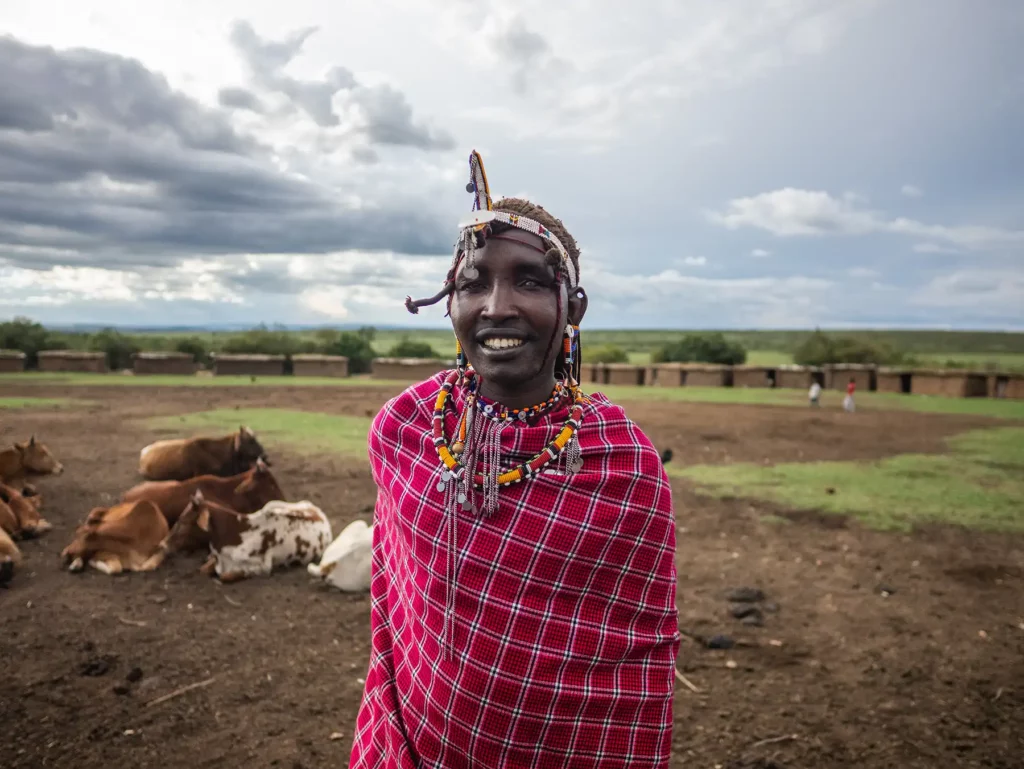
Tips for Your Visit to the Maasai Tribe
Late afternoons and evenings are the best time for boma visits, as this is when both the men and women will be around. A handshake is a customary greeting, and it’s polite to maintain eye contact during the interaction.
Always be culturally sensitive and ask before taking photos, especially if children are involved. Most people will be happy to oblige but sometimes older community members may not be keen, so do be respectful of their wishes.
Whilst it is not mandatory to purchase a souvenir from their shops, I always like to do this to support the community. Don’t be afraid to haggle the prices – the starting prices can be up to 4 times the amount that you can eventually purchase the product for.
Where to Spend the Night
Budget lodges and camps can be found outside the national reserve in Sekenani and Ololaimutiek Village. If you stay here, you only need to pay park fees for the days you visit.
In the reserve itself, there’s a range of lodges and camps for all travel styles and budgets.
For a higher-end experience with luxury accommodation and more exclusive game drives, opt for one of the private conservancies that border the Masai Mara. Naboisho, Mara North and Olare Motorogi are popular choices.
My favourite place to stay is actually the Talek region. This area is close to two gates to the Masai Mara and is home to a range of mid-range and luxury lodges.
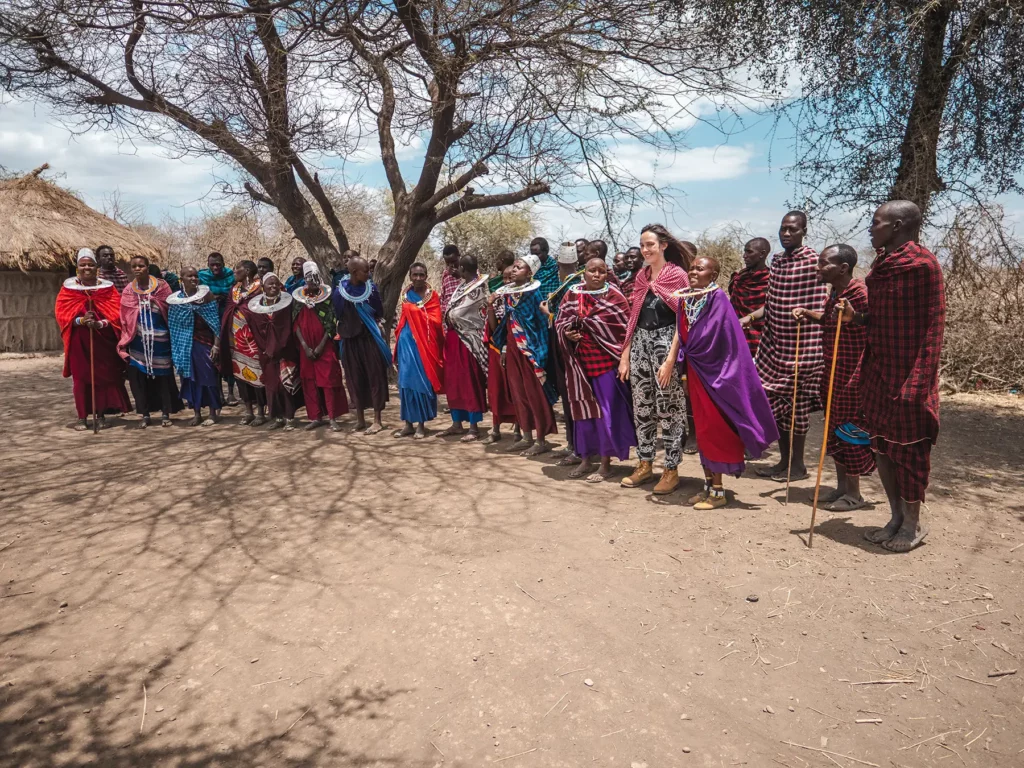
My Personal Experience with the Maasai Tribe
I’ve visited a number of Maasai bomas across both Kenya and Tanzania and have been surprised at just how different they are to one another.
One of my favourite Maasai experiences was just outside the Masai Mara National Reserve, in the Talek region. This felt like the most authentic experience as I saw the cows in the boma and watched as the Maasai took them out to graze.
The Maasai tribe have always been extremely friendly and welcoming to me and really appreciated all the questions I asked them.
As the Maasai play an important role in the conservation of the Masai Mara, I think it’s essential that we visit and support them.
A visit doesn’t need to be limited to just an hour or so, however. For one of my experiences, I spent an entire morning at a Maasai boma and witnessed them cook a meal, all the way from the very beginning of the process, which did involve slaughtering a goat. Another experience that you can have, is witnessing them drink cow blood which gives Maasai warriors strength.
You can watch a video including my personal experience visiting then Masai tribe below:

Day 2: Masai Mara National Reserve
Driving time (excluding game drives): 0 hours
Today is all about the wildlife as you’ll be spending several hours out in the reserve with an expert local guide. The landscapes in the Masai Mara are as diverse as the animals, making for a thrilling safari experience.
You’ll be returning to the same accommodation tonight, making this an easy yet satisfying day out. It’s worth mentioning that if you’re staying in a lodge or camp outside the reserve, or in one of the adjoining conservancies, part of your day will be spent driving to the entrance gate.
Itinerary
After an early breakfast, you’ll head out on a full-day game drive in Masai Mara National Reserve. You’ll be travelling across the Mara plains in a 4×4, which usually has open sides and a roof which pops open for prime animal viewing.
Your guide will take you to all the best spots for sightings, using their local knowledge to anticipate where the wildlife will be.
Stop for a picnic lunch beneath the shade of an acacia tree or on the banks of the Mara River overlooking a hippo pool.
In the afternoon you’ll continue your game drive, before heading back to your accommodation at sunset in time for dinner.
About the Masai Mara National Reserve
Established as a wildlife sanctuary in 1961 and awarded National Reserve status in 1974, the Masai Mara is probably the most famous safari destination in the world. This is a protected wildlife conservation area that allows the Maasai to maintain their traditional lifestyles with minimal human-animal conflict.
Kenya was the birthplace of safari, and the Masai Mara National Reserve is the most popular choice for a first safari experience. There are hundreds of animal and bird species in the reserve, so this is a nature-lover’s dream.
The Masa Mara is also one of the best places in Africa to spot the Big Five, so keep your eyes peeled for lions, elephants, cape buffalos, rhinos and leopards. Cheetahs are often seen here too, hunting out on the open savannah.

Tips for Your Visit to the Masai Mara National Reserve
The Masai Mara is a prime location for witnessing one of nature’s most impressive spectacles – the Great Migration. This is when vast herds of wildebeest, zebra, and antelope flood the Masai Mara plains having arrived from the Serengeti in search of greener grazing land.
While the best time to visit Tanzania for the Migration is between January and June, in Kenya it’s a little later, from July to October. Book early if you want to see the Migration as it’s the most popular time of year for Masai Mara safaris. If you’re here in late July or August you might see some of the animals crossing the famous crocodile-infested Mara River.
The best times to go on safari in the Masai Mara are in the early morning and evening as this is when the animals are most active. Therefore I always recommend ensuring you’re out on your game drive at this time.
The Masai Mara park fee recently changed to an ‘upon entry’ model which means it isn’t ideal to leave the park part-way through the day as you’ll have to pay to return later on. Therefore full day safaris with picnic lunches are preferable.
Where to Spend the Night
As this is a 3-day Kenya safari itinerary it’s best to stick to one accommodation base during your trip. All your activities can be arranged through the lodge or camp, keeping logistics simple and efficient.

My Personal Experience in the Masai Mara National Reserve
The Masai Mara has gifted me with some of my best ever wildlife sightings. On my very first day in the Mara, I came upon a stunning female cheetah with four adorable cubs in tow. Watching them tussle and chase one another through the open savannah is a sight that will stay with me forever.
The Masai Mara is particularly famous for its high density of lions. The lions here are heavily studied and have featured in countless wildlife documentaries, meaning that the guides know each of the prides and the individual pride members by name. This adds an extra layer of interest to safaris here as each pride has a riveting backstory. I was fortunate to stumble upon five different prides on my first visit to the Mara as well as some nomadic males.
The Masai Mara is also a great place for leopard sightings. On my third day of safari in the Masai Mara, I finally found a beautiful female leopard and when I returned the following day, I was delighted to catch her eating a freshly-killed gazelle, providing me with my best leopard sighting to date.
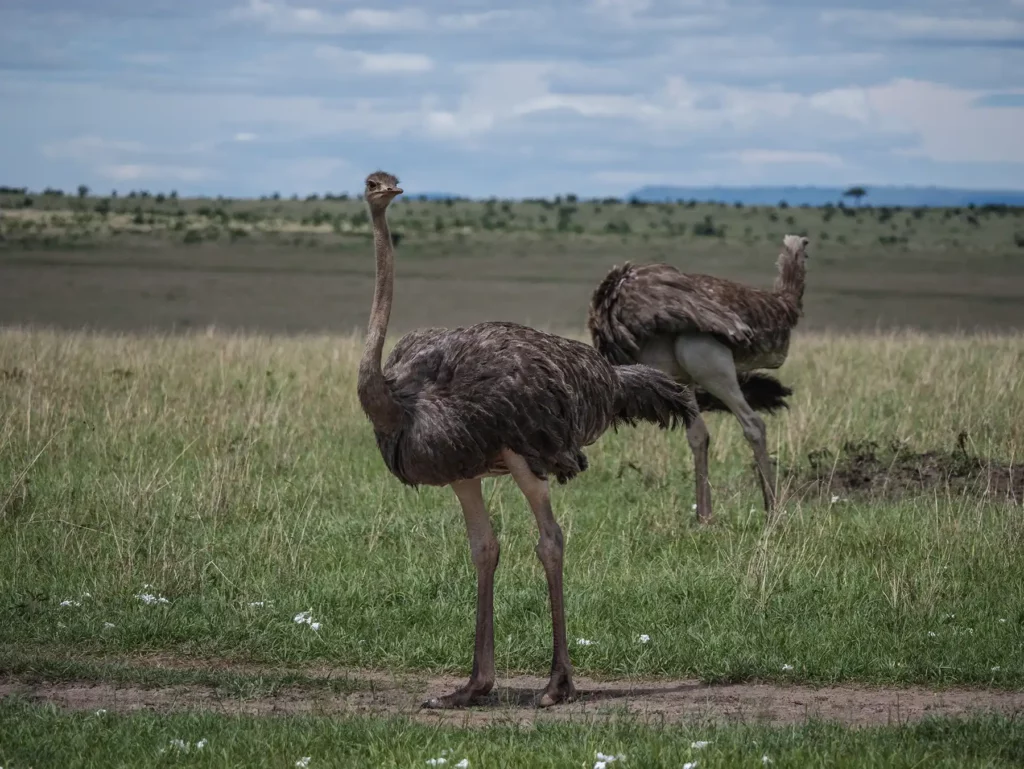
Day 3: Masai Mara to Nairobi
Driving time (excluding game drives): 6 hours
To make the most of your 3-day Kenya safari you’ll have plenty of time for another game drive this morning before heading back to Nairobi.
Itinerary
You’ll spend the morning out and about in the Masai Mara on your final game drive of the trip. If there’s an animal you particularly want to see before leaving the reserve, just ask your guide and they’ll do their best to oblige.
Park departure is usually by 10 AM to avoid paying an extra day of entry fees. You’ll drive through Maasai villages on your way back to Nairobi, arriving in the capital during the late afternoon.
Where to Spend the Night
Spend your final night in Nairobi, ready for your onward adventures the next day. Budget travellers will find affordable accommodation in the city centre but be aware that traffic can be a problem. If you have an early flight tomorrow, book a hotel near the airport to avoid the congestion.
For a more leisurely layover, stay in the peaceful Karen neighbourhood which boasts several luxury hotels and superb views of the famous Ngong Hills. If you have time, visit the Karen Blixen Museum, the Sheldrick Wildlife Trust, and the Giraffe Centre before departing.
You can watch a video of my Masai Mara experience below.
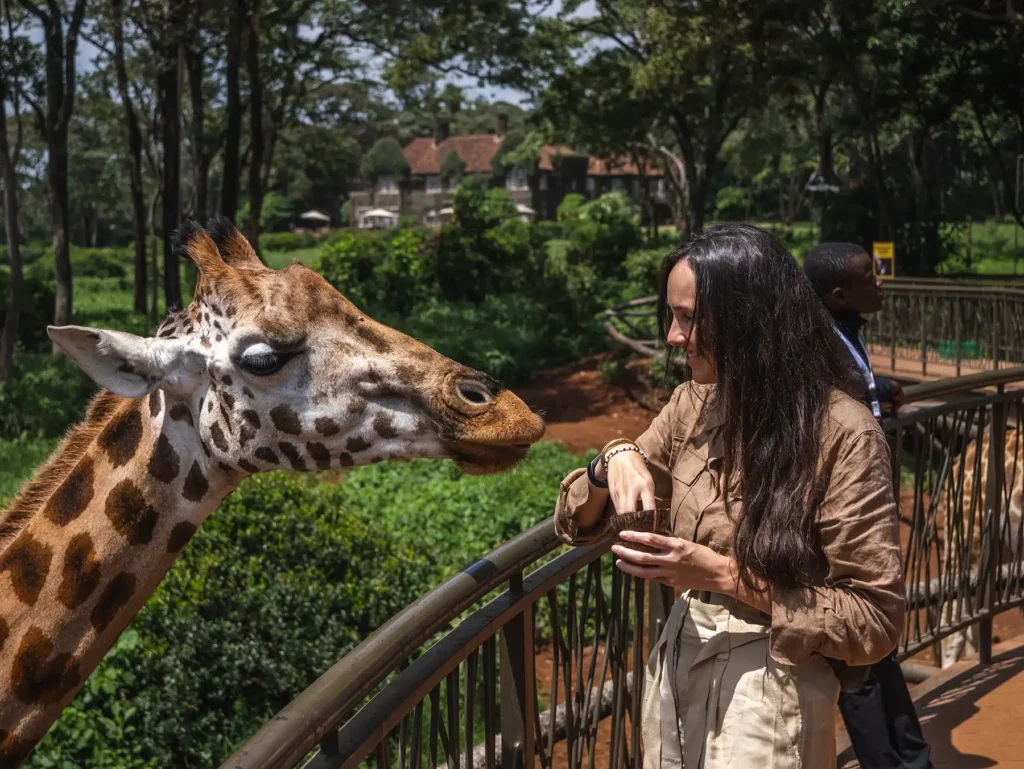
Itinerary Costs
Prices for this 3-day Kenya safari start at around $350 – $540 per person per day for a private trip for 2 people and $200 – $300 per person per day for a shared group tour. This is based on using local operators, with prices varying according to the standard of lodging and the number of passengers in the safari vehicle.
Park fees will account for a significant proportion of both budget and mid-range safaris. Entry into the Masai Mara costs $200 per adult per day in high season (July – December) and $100 per adult per day between January and June. If you’ve booked a package tour the fees are usually included but do check at the time of reservation.
Prices can vary a lot depending on your group size. For example, for a private safari for 1 person, you can expect to pay a starting price of $600 per person per day compared to $350 per person per day.
The popularity of the Masai Mara makes it one of the most expensive reserves to visit in Kenya.
Self-driving used to be a way to reduce costs in the Masai Mara, however, as of June 2024, self-driving is now banned in the Masai Mara.
Recommended Booking Options For Your 3-Day Masai Mara Safari Itinerary
Private Safari
Most popular & best experience – typical prices for this itinerary start from $350 per person per day.
Visit safarisbyella.com for free quotes from trustworthy local tour companies I use to book my own trips.
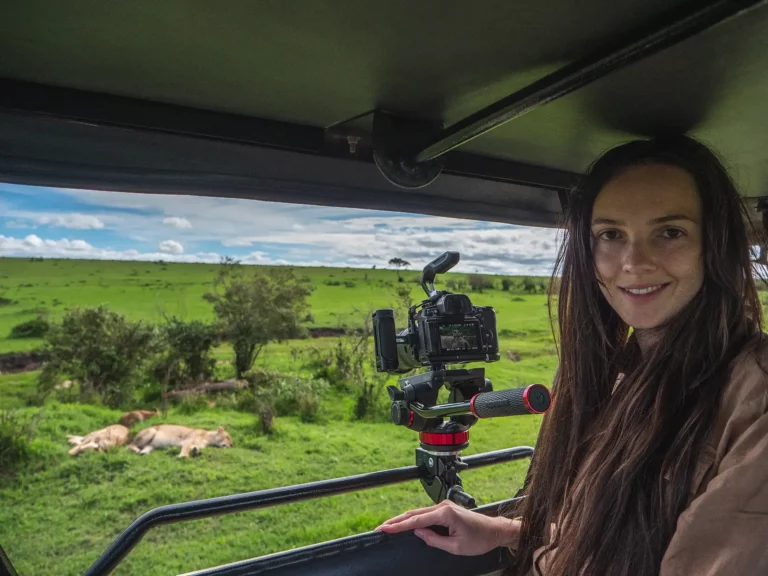
Group (Shared) Safari – Usually Camping
Good for budget or solo travellers – from $220 per person per day.
My recommended Tanzania tour operators only provide private safaris, however, I’ve listed the best and most similar group options for this itinerary, on SafariBookings below.
Click the link below to request quotes for the group safari options on the SafariBookings website.
3-Day Budget Group Safari (Option 1)
3-Day Budget Group Safari (Option 2)
3-Day Budget Group Safari (Option 3)
View All My Recommended Group Options Following a Similar Itinerary
Jump back to the table of contents to select another 3 day itinerary to view or keep scrolling to read the next itinerary.
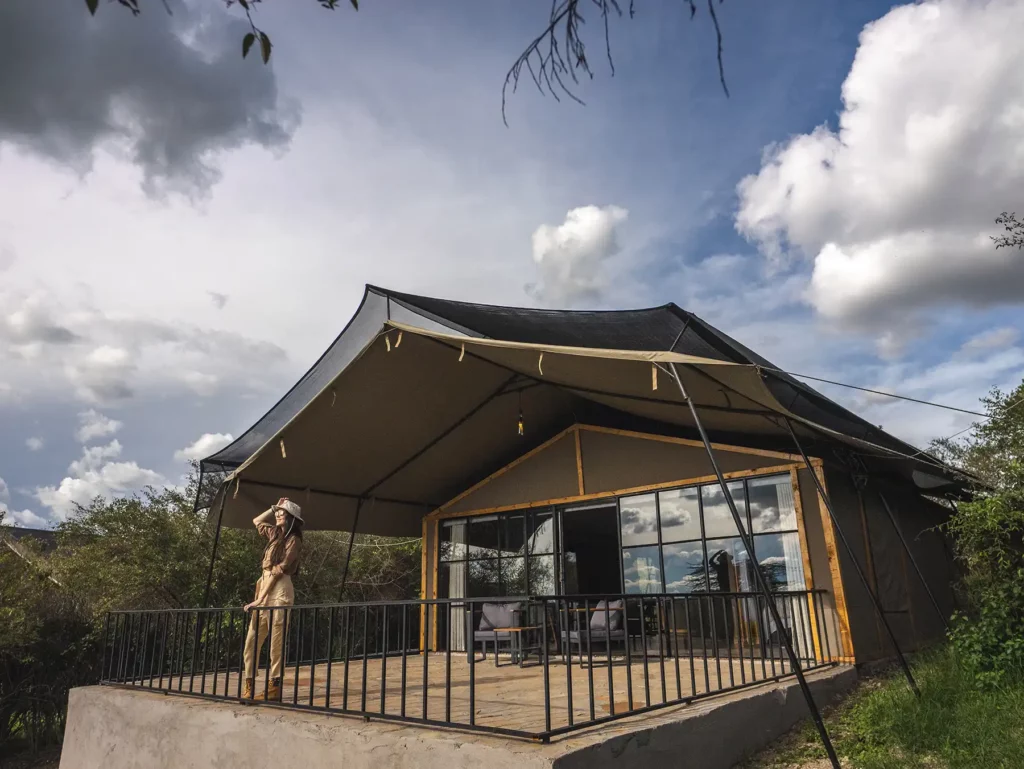
Option 2
3-Day Great Lakes Safari Itinerary
This itinerary shows you a different side of Kenya, taking in iconic lakes and volcanic scenery in one of the country’s most accessible national parks. Venture out on a boat safari at Lake Naivasha, spot flamingos and enjoy a game drive around Lake Nakuru, before finishing on a high with a rugged hike in Hell’s Gate National Park.
The trip combines short road distances, epic scenery, and a variety of accommodation to create one of Kenya’s most affordable 3-day safari itineraries. With good roads and easy access to wildlife, it’s a great choice if you want to combine the best that the country has to offer.
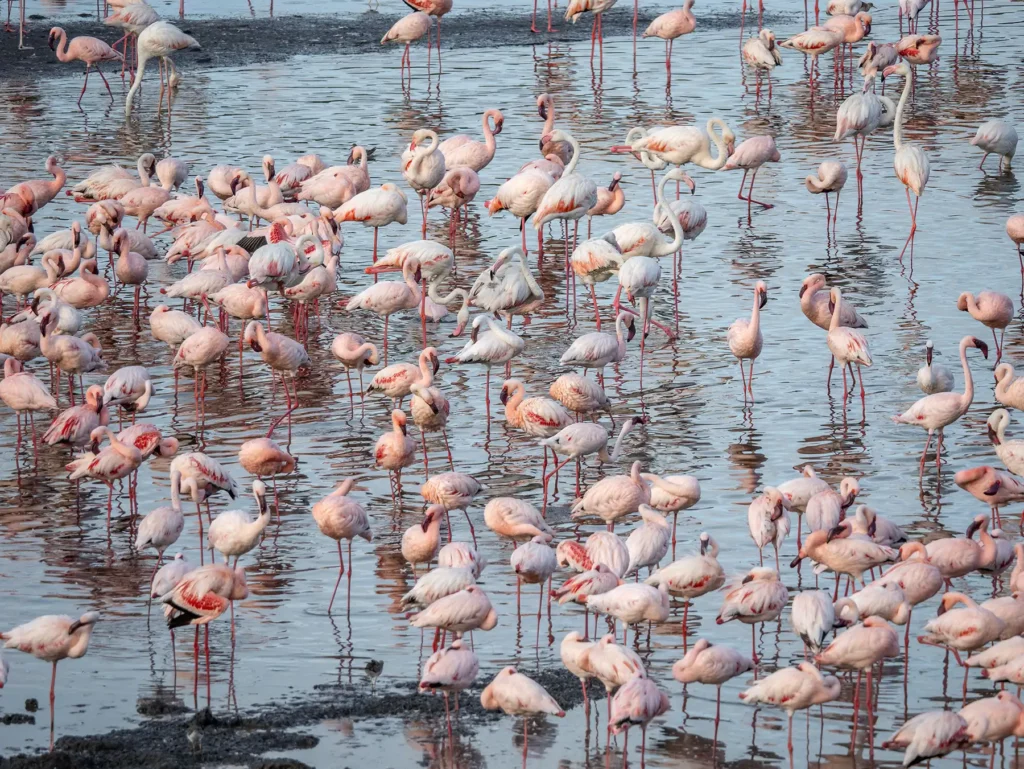
Quick Facts
Average driving time: 2.5 hours per day
Best times of year: Come between June and October for the best conditions at the lakes and in Hell’s Gate National Park. This is the dry season which makes wildlife viewing and hiking easier.
Itinerary Map for 3-Day Great Lakes Safari Itinerary
Itinerary starts and ends in Nairobi.
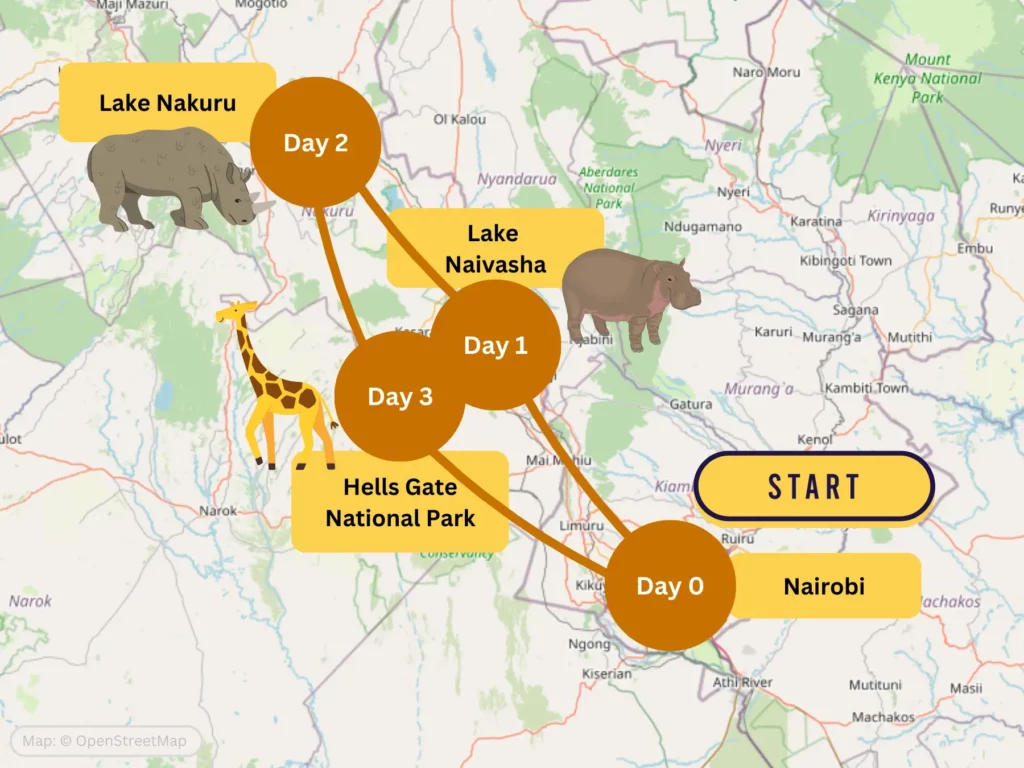
Day By Day Breakdown of 3-Day Great Lakes Safari Itinerary
Day 1: Lake Naivasha
Driving time (excluding game drives): 2 hours
Today you’ll kick-start your safari by journeying from Nairobi to Lake Naivasha.
It’s a short drive from Nairobi to Lake Naivasha, so you’ll be in the heart of the action in no time. You’ll then have most of the day to explore, with a boat trip to Crescent Island being the highlight. With an overnight stay in Naivasha town, you’re well placed to continue your adventures tomorrow.
Itinerary
Head out from Nairobi after breakfast on a scenic 2-hour drive through the Rift Valley. After arriving at Lake Naivasha, you’ll have some free time to explore. There are lots of things to do in the region, so you’ll have plenty of options. Visit a flower farm and wander among the roses, take a nature walk with a local guide, or go horse riding in a local conservancy.
After lunch, you’ll head out on a boat safari around Lake Naivasha. This is the best way to see the resident wildlife, which often congregates around the water’s edge. Hippos are frequently seen in the lake while fish eagles and pelicans fly overhead.
Make a stop at Crescent Island, which is home to a protected game sanctuary. The island was once joined to the mainland, but rising water levels cut the peninsula off, leaving the animals stranded. Exploring with a local guide, you’ll have a good chance of spotting a range of animals, from giraffes and buffalos to wildebeest and bushbucks.
About Lake Naivasha
Lake Naivasha is one of Kenya’s best-known freshwater lakes and is the highest in the Great Rift Valley. It sits beneath the extinct volcano of Mount Longonot, and the lake’s iconic Crescent Island is part of an ancient crater rim. The surrounding region is known for its fertile volcanic soils – the flowers and vegetables grown here are sold around the world.
You can visit Lake Naivasha on a day trip from Nairobi, but staying overnight gives you longer to explore this beautiful area. Boat safaris and a visit to Crescent Island are the most popular activities to enjoy at the lake.
Tips for Your Visit to Lake Naivasha
Lake Naivasha is popular with weekend day trippers from Nairobi, so to avoid the crowds, come during the week. Here for bird watching? Plan your visit between October and March when migratory species join the local flocks.
It’s often possible to arrange activities on site, but to guarantee availability it’s best to book in advance, especially during the peak dry season between July and October. Note that boat trips to Crescent Island don’t include the $33 entrance fee, which you’ll need to pay on arrival.
Where to Spend the Night
There’s a lot of choice when it comes to accommodation at Lake Naivasha. Upmarket lodges and resorts are dotted along the lake shores, offering luxury stays and organised activities.
Mid-range hotels and budget guest houses are available in Naivasha town, and here you’ll be in a great location to carry on your explorations the next day.
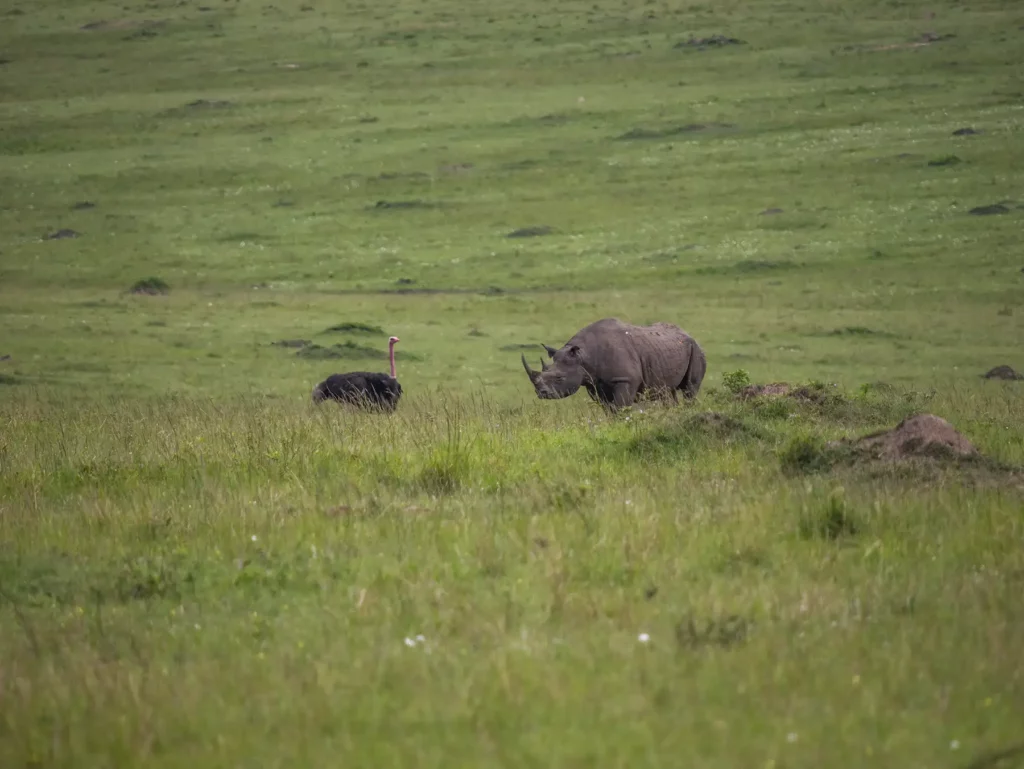
Day 2: Lake Nakuru
Driving time (excluding game drives): 1.5 hours
Today you’ll head north with a short drive up to Lake Nakuru. There’s plenty to keep you occupied in this region, with games drives and bird watching both on the agenda. This is also your chance to see the famous flamingos and enjoy some free time hiking or horse riding.
Itinerary
Departing Naivasha after breakfast you’ll drive 1.5 hours up to Lake Nakuru before spending the rest of the day exploring the national park.
Begin your adventures with a guided game drive across the savannah, keeping an eye out for black and white rhinos. Waterbucks, leopards, and lions roam here too. Finish your excursion down at the lake shore and see if you can spot the hippos wallowing in the shallows.
Tuck into a picnic lunch at the Out of Africa overlook on the southwestern side of the lake.
Ree-nergised after your alfresco feast, you can take your pick of activities for the afternoon. Trek along the park outskirts on a horse-riding tour, hike to Makalia Falls, or visit the Hyrax Hill Prehistoric Site which is a short drive from the town.
About Lake Nakuru
Sitting just north of Naivasha, Lake Nakuru is one of the most famous soda lakes in the Great Rift Valley. It’s known for its flamingos, with vast pink flocks coming here to feed in the algae-rich waters. Rising water levels mean that flamingo numbers have fallen dramatically over the last few decades, but this is still the best place in Kenya to see them.
Flamingos aside, Lake Nakuru is a great spot for bird watching, with over 450 species to find. Fish eagles, pelicans, and shining sunbirds are often seen. The park offers land-based game viewing too with over 50 mammal species living here. There’s a particular focus on black and white rhinos as well as the endangered Rothschild giraffe.
Tips for Your Visit to Lake Nakuru
You can see flamingos all year round at Lake Nakuru, but the best sightings are between July and September or December and February when there is more algae present.
There are several panoramic viewpoints overlooking Lake Nakuru, which are all easily accessed by car. One of the best is Baboon Cliff. It’s on the northwestern shore of the lake with toilet facilities and a picnic area. Just keep your lunch away from the baboons!
Where to Spend the Night
You’ll find several accommodation options around Lake Nakuru, with everything from luxury lodges to tented camps available. You can arrange activities through your hotel or book them independently depending on what you fancy doing.
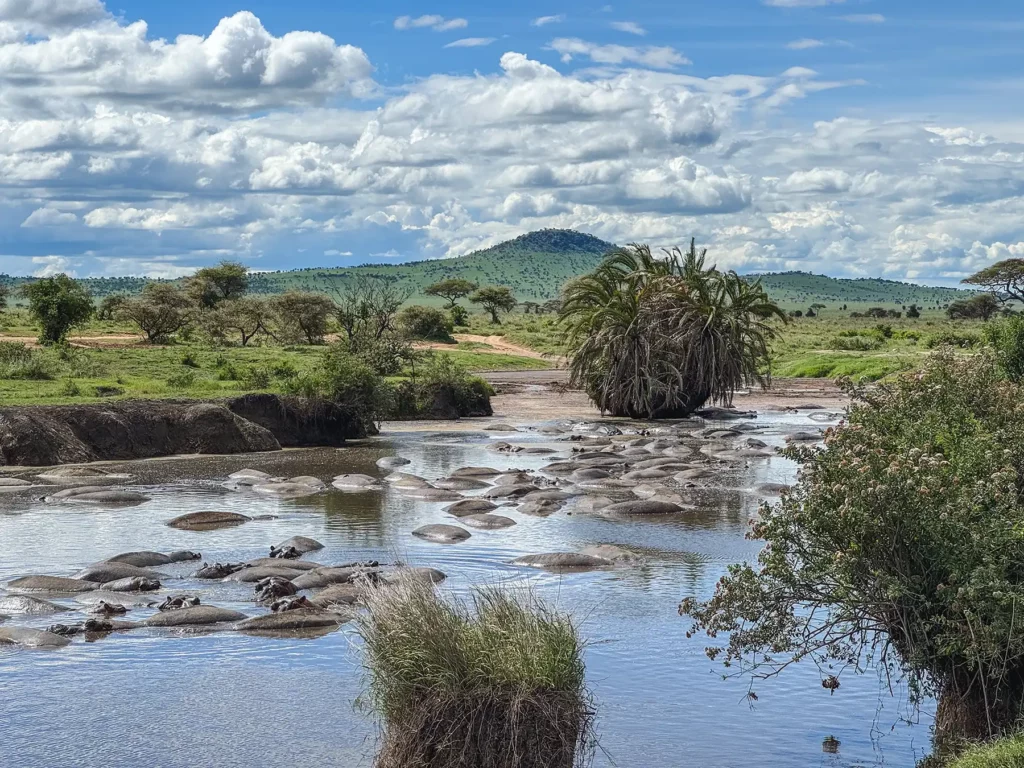
Day 3: Hell’s Gate National Park
Driving time (excluding game drives): 4 hours
Today is all about geology and outdoor adventure as you explore the volcanic landscapes of Hell’s Gate National Park. Hiking, cycling, and climbing are the best ways to experience the cliffs and gorges while the local wildlife can be viewed on foot for extra thrills.
Itinerary
This morning you’ll enjoy a picturesque 2-hour drive from Lake Nakuru down to Hell’s Gate National Park. On arrival, you can explore at leisure with a range of adventurous activities to choose from.
Hiking is popular as visitors can roam freely across the whole park, often in the company of zebras and giraffes. You’ll need to take a guide, but they’ll help you make the most of your visit. Rock climbing trips can also be booked through local operators, with routes tackling the sheer cliffs for more experienced climbers.
If you fancy exploring on two wheels, bikes can be hired at Elsa’s Gate. From here, you can enjoy a scenic 9 km downhill ride to Hell’s Gate Gorge. The excursion takes half a day and includes hiking in the gorge before an uphill cycle back to the gate. A decent fitness level is recommended for this one.
After your exertions, enjoy a soak in the geothermal pools at the Olkaria Geothermal Spa before the 2-hour drive back to Nairobi.
About Hell’s Gate National Park
Located just south of Lake Naivasha on the floor of the Great Rift Valley, Hell’s Gate National Park is known for its dramatic volcanic landscapes and hiking trails. The geology here is stunning with plunging sandstone cliffs, geothermal vents, caves, and extinct volcanoes setting the scene.
The park is home to a remarkable variety of wildlife too, with plains game such as buffalo, eland, hartebeest, and Thomson’s gazelle frequently sighted. You may also spot hyenas and baboons on the hunt for their next meal.
Tips for Your Visit to Hell’s Gate National Park
The ultimate time to visit the park is between June and February when wildlife is more easily spotted in the drier conditions. There’s not much shade in the park so carry plenty of water and avoid the hot afternoons if you can. Sturdy hiking shoes are a must.
You can access Hell’s Gate National Park all year round, but the rain might stop play between March and May when hiking and climbing becomes more difficult.
Where to Spend the Night
You’ll return to Nairobi in the evening so plan to spend a night in the capital.
Itinerary Costs
This 3-day Kenya itinerary is one of the cheaper options with relatively short driving distances, a variety of accommodation options, and affordable activities.
Prices start at around $200 per person per day for a guided private package tour. This is based on full board accommodation, with transfers, park fees, and activities included.
Remember if you’re organising the trip yourself, you’ll need to factor in park fees, although these are considerably lower than rates for many other parks in Kenya. There’s no entry fee for Lake Naivasha, although there is a fee for the boat ride.
- Lake Nakuru National Park: $60 per adult per day (includes a game drive)
- Hell’s Gate National Park: $26 per adult per day
Recommended Booking Options For Your 3-Day Great Lakes Safari Itinerary
Private Safari
Most popular & best experience – typical prices for this itinerary start from $200 per person per day.
Visit safarisbyella.com for free quotes from trustworthy local tour companies I use to book my own trips.

Group (Shared) Safari – Usually Camping
Good for budget or solo travellers – from $140 per person per day.
My recommended Tanzania tour operators only provide private safaris, however, I’ve listed the best and most similar group options for this itinerary, on SafariBookings below.
There are no 3-day group tours that follow this itinerary. However there is a 5 day option which I have listed below.
Click the link below to request quotes for the group safari options on the SafariBookings website.
5-Day Budget Group Great Lakes Tour
All Recomended Group Options up to 5-Days, Without Hells Gate Which Gives More Options
View All My Recommended Group Options Following a Similar Itinerary
Jump back to the table of contents to select another 3 day itinerary to view or keep scrolling to read the next itinerary.

Option 3
3-Day Eastern National Parks Safari Itinerary
This gem of a Kenya safari itinerary packs a lot in over just 3 days. You’ll have the chance to tick off the Big Five, explore the contrasting national parks of Amboseli and Tsavo West, and soak up some of the best views in Africa.
Huge herds of elephants and Kilimanjaro panoramas make this easy trip perfect for that quintessential safari experience.

Quick Facts
Average driving time: 5 hours per day
Best times of year: Wildlife viewing and road conditions are best during the dry season, between June and October.
Itinerary Map for 3-Day Eastern National Parks Safari Itinerary
Itinerary starts and ends in Nairobi.
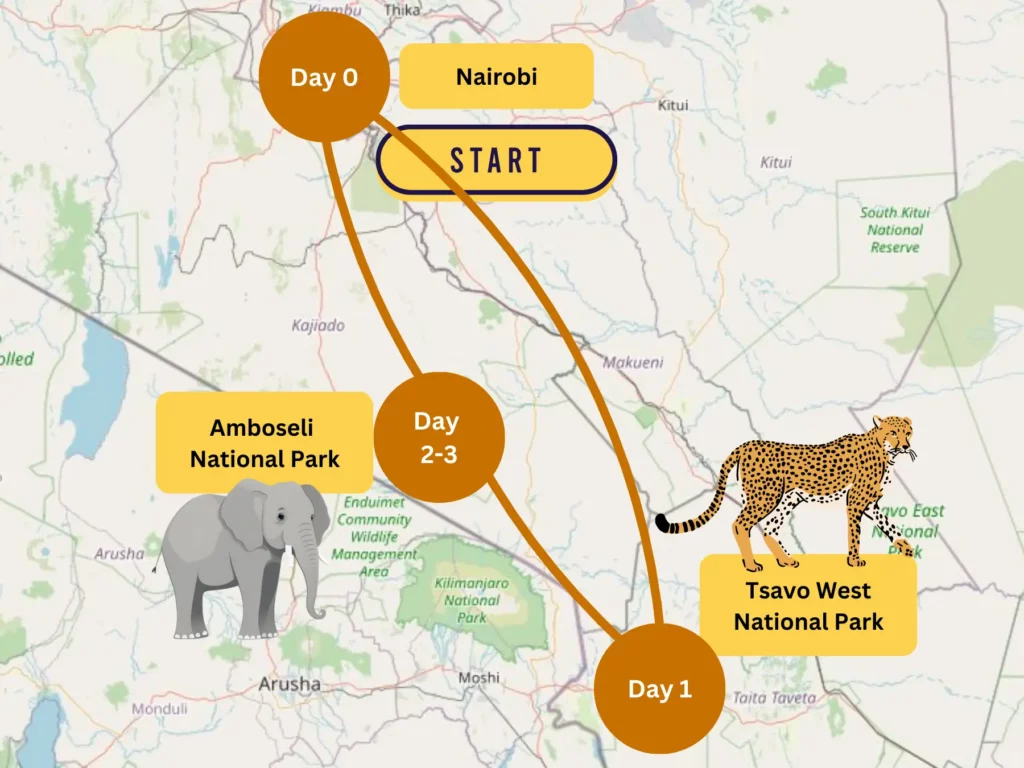
Day By Day Breakdown of 3-Day Eastern National Parks Safari Itinerary
Day 1: Tsavo West National Park
Driving time (excluding game drives): 6 hours
After spending half the day journeying from Nairobi to Tsavo West, you’ll enjoy an afternoon game drive for some of Kenya’s best wildlife viewing. There are abundant park tracks giving vehicles easy access to vast areas of Tsavo.
Itinerary
Prepare for an early start before driving south from Nairobi along the Nairobi-Mombasa Highway to Tsavo West National Park. It takes about 5 hours, but the route through Masai country is scenic, with traditional homesteads and cattle herds dotted along the way.
Check into your accommodation and refuel with some lunch, before heading out on an afternoon game drive. As you trundle across the plains in the open-sided safari vehicle, you might see the famous super tuskers – elephants with some of the longest tusks in the world.
Meanwhile, down in the riverine forests, you might spot a leopard hanging out in the trees. During the dry season, most of the wildlife will be concentrated around the water, so this is a great place to see everything from lions to buffalo.
About Tsavo West National Park
You’ll find Tsavo West in the southeast of Kenya, just across the border from Tanzania. If you’re visiting both countries, it’s easy to combine a safari in Tanzania with a visit to Tsavo West.
Tsavo National Park is divided into East and West, separated by the railway that runs between Nairobi and Mombasa. This is where the infamous “man-eating lions of Tsavo” once prowled, causing the deaths of several rail construction workers in 1898. Don’t worry, those lions are long gone, and their descendants are far better behaved.
The western part of the park is the most accessible, which makes it a good choice for a 3-day Kenya safari. Landscapes here are dramatic, and the wildlife biodiversity is some of the best in the country.
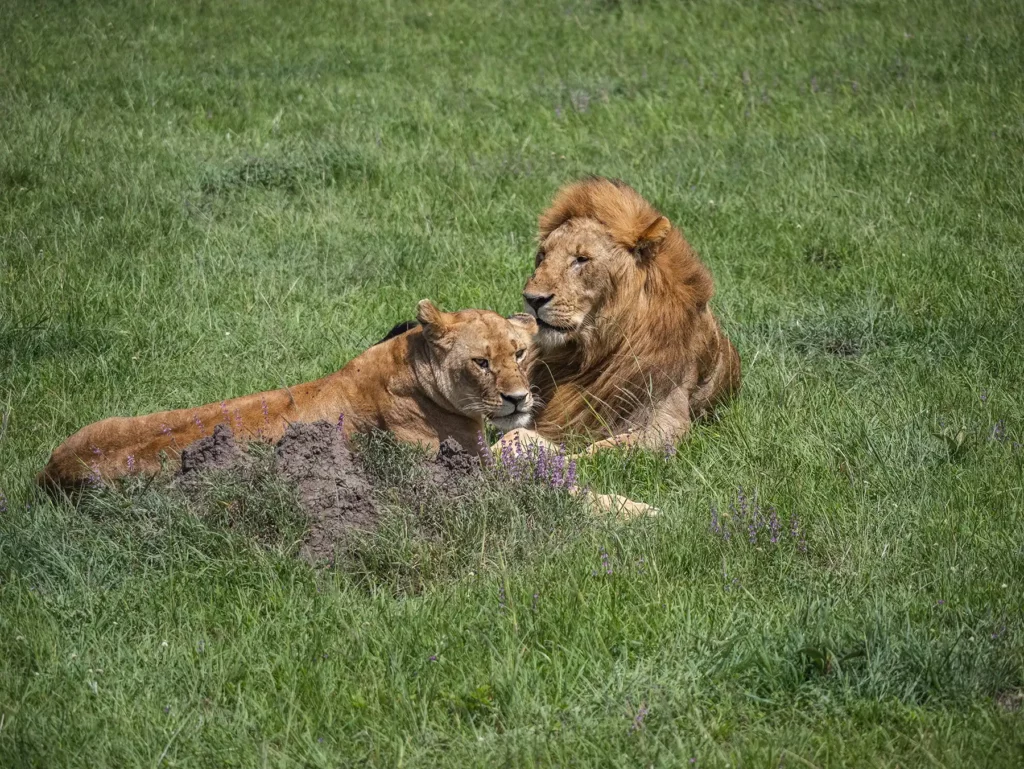
Tips for Your Visit to Tsavo West National Park
You can do a self-drive safari in Tsavo West National Park, but you’ll need a 4X4 to tackle the rugged tracks. While self-driving is cheaper, you’ll need to factor in the cost of a hire vehicle, and you’ll probably miss several sightings that only a game drive with an experienced local guide would provide.
Like with all safari destinations, the best game viewing can be had in the early mornings and evenings, when temperatures are cooler. This is the best time to spot big cats and other predators.
The road into Tsavo West is liable to flooding so I’d avoid visiting Tsavo West in the short rainy season (November to December) and the long rainy season (March to May).
Where to Spend the Night
There are several tented camps and lodges in and around Tsavo West National Park suitable for all budgets. For the cheapest options, look for campsites, guest houses, and budget hotels outside the park boundary. You’ll find the more luxurious lodges inside the park. These come with superior facilities, services, and activities.

Day 2: Amboseli National Park
Driving time (excluding game drives): 4 hours
Today you’ll head to Amboseli, another of Kenya’s iconic national parks. With a stop en route at Mzima Springs and an afternoon game drive on the Amboseli plains, this is a day packed with wildlife experiences.
Itinerary
If you’re staying at a lodge within Tsavo West, get up early to catch the sunrise across the park. Then after breakfast, you’ll enjoy a leisurely drive up to Amboseli, which is just a couple of hours away.
Stop for a break at Mzima Springs, a natural waterhole which attracts wildlife from far across the plains. It’s home to crocodiles and hippos too. You can stretch your legs with a short nature walk on the path beside the pools with your guide.
Then it’s on to Amboseli, with Mount Kilimanjaro getting closer every minute. Check into your accommodation, then head out on an afternoon game drive. Everything from hyenas and jackals to buffalos and the famous Amboseli elephants are often spotted here.
About Amboseli National Park
Famed for its large elephant herds, Amboseli is a favourite with first-time safari goers. Here, you have wide grassy plains with a snow-capped Mount Kilimanjaro looming in the background. This makes for great photos, especially when the wildlife poses obligingly.
Amboseli sits in Kenya’s Rift Valley and is the perfect place to see the iconic plains game. Wildlife here is abundant thanks to the diverse ecosystems – there’s everything from swamps to savannahs in Amboseli. The park is also known for its big cats and is one of the top places to see a lion or cheetah hunt.
Amboseli is a relatively small national park, which means wildlife is denser and therefore easier to spot. If you’re visiting during the dry season, you’ll easily see the animals gathering around the watering holes, so keep your camera handy.
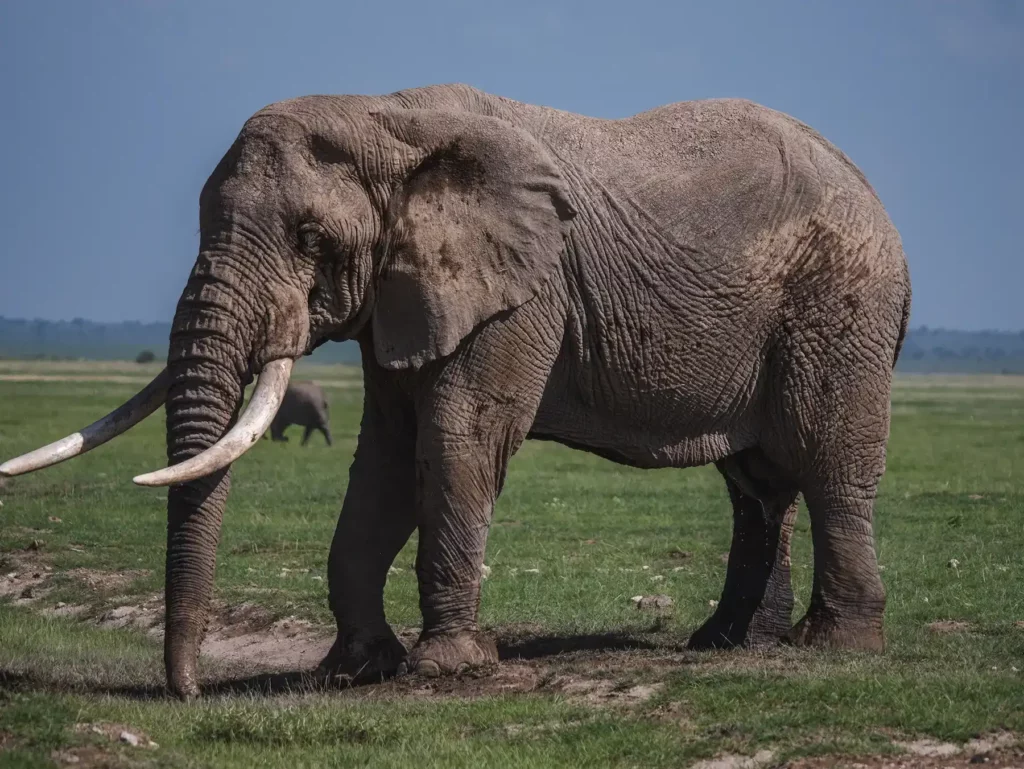
Tips for Your Visit to Amboseli National Park
If you have time, hike up Observation Hill for the best 360-degree views across the park. It’s a short, easy walk with rich rewards and is a great place for a picnic lunch. Carry plenty of water and some binoculars for elephant spotting.
Take a zoom lens for your camera so you can snap those epic Mount Kilimanjaro shots. It can get dusty in the dry season, so lens cleaning wipes are a good idea.
Where to Spend the Night
Amboseli boasts several safari lodges, guest houses, and tented camps. The privately owned lodges tend to be the most luxurious with the best Mount Kilimanjaro panoramas. However, you’ll find that even some of the budget places have great views of Kilimanjaro, although services and facilities vary greatly so do check what’s included in the price.
There are a handful of lodges within the park itself. However most options can be found just outside the Kilma Gate to the south east of the park. This is a great place to base yourself as it’s very close to the area where Amboseli’s elephants cross to and from the foothills of Kilimanjaro to the swamps in the middle of the park.
My Personal Experience in Amboseli National Park
I knew that Amboseli was famous for its large elephant herds but I hadn’t fully contemplated just how big these herds were.
Almost immediately upon entering Amboseli for the first time, I saw my first elephants, gradually ambling towards the road, the foothills of Kilimanjaro firmly in their vision. It was evening and after a full day spent relaxing at Amboseli’s cool swamps, they were now returning to their homes for the night.
Even the female elephants had tusks that were far longer than I had seen before. Bouncing alongside the females were calves of various ages, including a tiny calf that my guide told me must only be a week or two old.
It wasn’t just the elephants that made my experience in Amboseli so magical. Coming across a pride of lions with several litters of cubs was also a highlight. One of the litters was only three weeks old and the tiny cubs were squeaking in delight at their mother. I also saw three cheetahs in Amboseli and even witnessed them hunting.
The only resident of Amboseli who eluded me was the mountain itself. Kilimanjaro was nestled behind thick blankets of cloud, which I suppose was to be expected considering I was visiting in the rainy season. If you’d like to increase your chances of seeing Kilimanjaro, coming in the dry season is a great idea.
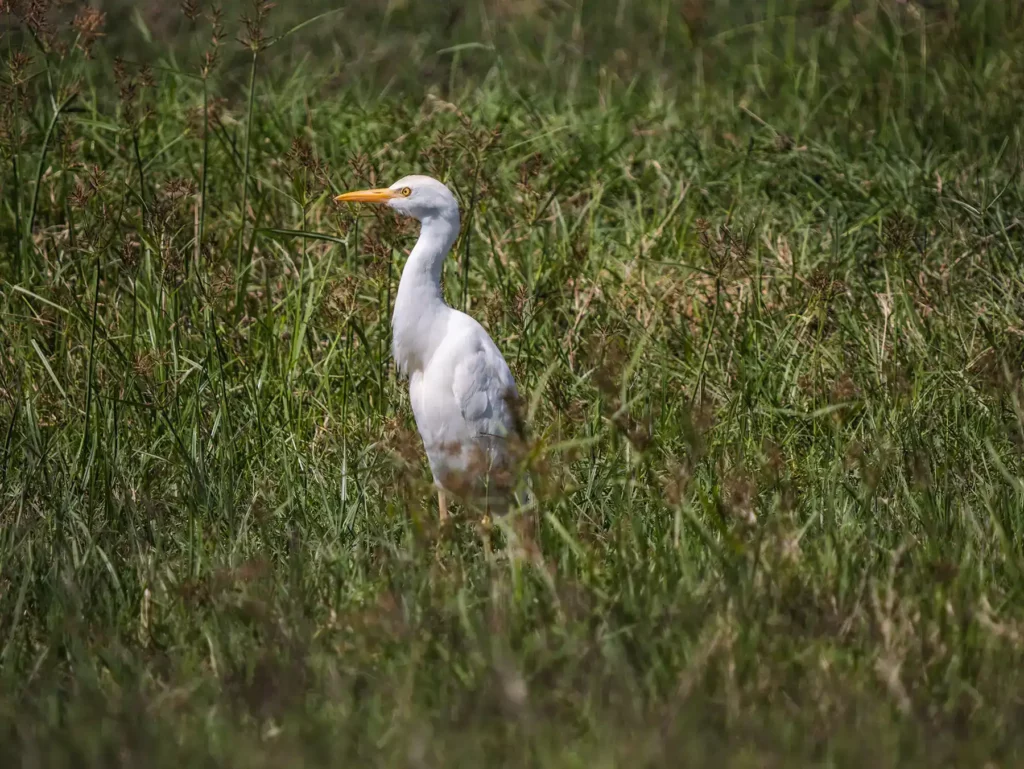
Day 3: Amboseli to Nairobi
Driving time (excluding game drives): 5 hours
You’ll leave Amboseli and drive back to Nairobi today, but not before you’ve enjoyed a final game drive in the park.
Itinerary
Rise early for a last game drive in Amboseli, and watch the sun flood the plains with colour as it rises over the park. This is when the animals are at their most active so you’re in with a good chance of some memorable sightings, perhaps of elephants or even cheetahs. Tuck into breakfast out in the bush whilst surrounded by nature.
The elephant herds journey from the forests beneath Kilimanjaro to the swamps in the centre of the park typically between 7am and 8am so if you’re in the park at this time, you have a high chance of seeing the huge herds crossing the road in front of you, on their daily journey to cool off.
Finally, you’ll leave Amboseli behind, with a 5-hour drive back to Nairobi. You’ll arrive in the capital during the late afternoon in time for an evening flight, or an overnight in the city.
Where to Spend the Night
Unless you have a late flight out of Kenya, you’ll spend the night in Nairobi, either in the city or at an airport hotel.
Itinerary Costs
For this 3-day Kenya safari itinerary, expect to pay around $300 per person per day for a private budget safari for two people. Prices vary according to the level of accommodation you choose, and the number of participants on the game drives.
Amboseli and Tsavo West are a lot cheaper than the Masai Mara so this itinerary is a great option if you’d like to see the Big Five but don’t want to spend $200 per person per day on park fees.
Want to keep costs down? Self-drive safaris are possible in Amboseli, although most people prefer to travel with a guide to maximise their chances of wildlife encounters, after all, the locals know best. If you’re travelling independently, remember to factor in the park fees, which are $60 per person per day for Amboseli, and $60 plus a $3 vehicle fee for Tsavo West.
Accommodation prices are higher during the peak season between June and October, so travel outside these times to save money. Just remember that some places close in the wet seasons from April to May and from November to December, so aim for the shoulder months instead if you want a cheaper safari.
Recommended Booking Options For Your 3 Day Eastern Circuit Highlights Itinerary
Private Safari
Most popular & best experience – typical prices for this itinerary start from $300 per person per day.
Visit safarisbyella.com for free quotes from trustworthy local tour companies I use to book my own trips.

Group (Shared) Safari – Usually Camping
Good for budget or solo travellers – from $120 per person per day.
My recommended Tanzania tour operators only provide private safaris, however, I’ve listed the best and most similar group options for this itinerary, on SafariBookings below.
There are no 3-day group tours that follow this itinerary. However, I have included some which include Amboseli and also Tsavo West separately. I've also included a 3rd link to some 7-day tours which include both parks.
Click the link below to request quotes for the group safari options on the SafariBookings website.
View My Recomended 3-day Group Tours Including Amboseli
View My Recomended 3-day Group Tours Including Tsavo West
View All My Recommended Group Options Following a Similar Itinerary
Jump back to the table of contents to select another 3 day itinerary to view or keep scrolling to read the next itinerary.
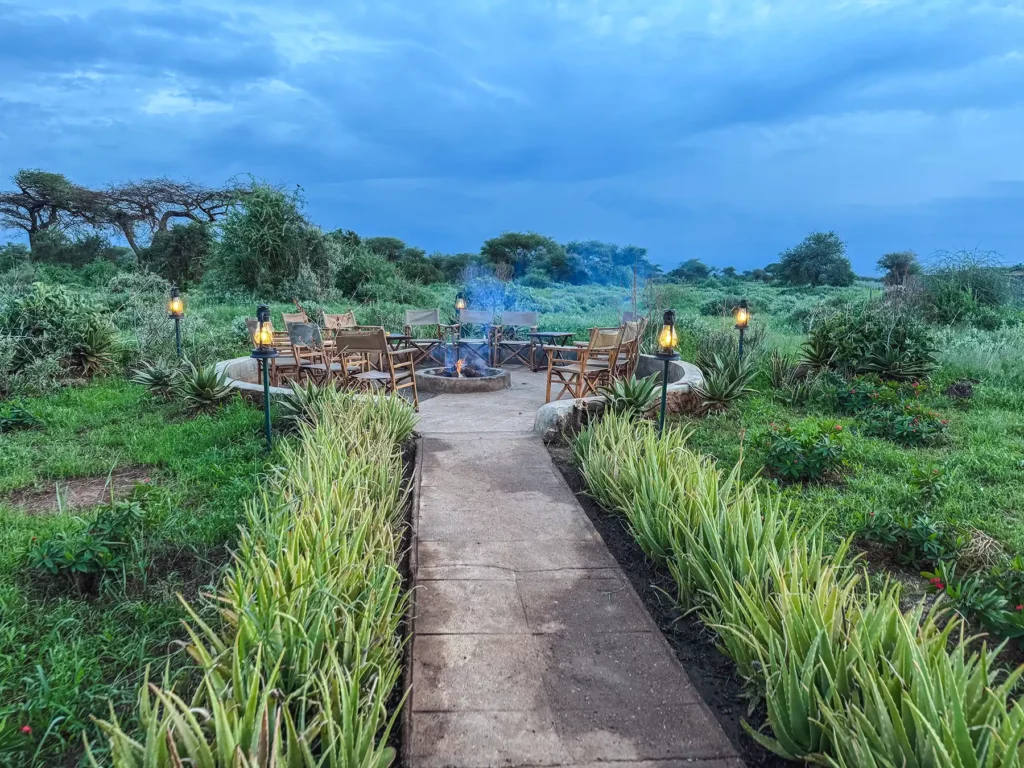
Option 4
3-Day Amboseli Safari Itinerary
On this safari adventure, you’ll be exploring the heart of one of Kenya’s most popular parks. It’s the perfect place for those quintessential wildlife sightings, with Mount Kilimanjaro making for iconic photos.
You’ll enjoy multiple game drives and visit a local village to learn about traditional Maasai culture and community. This is a great 3-day Kenya safari for those who prefer to stay for longer in one place without too much time spent on road transfers. It’s the perfect option for first-time safari goers who want to see as many animals as possible in a beautiful plains setting.
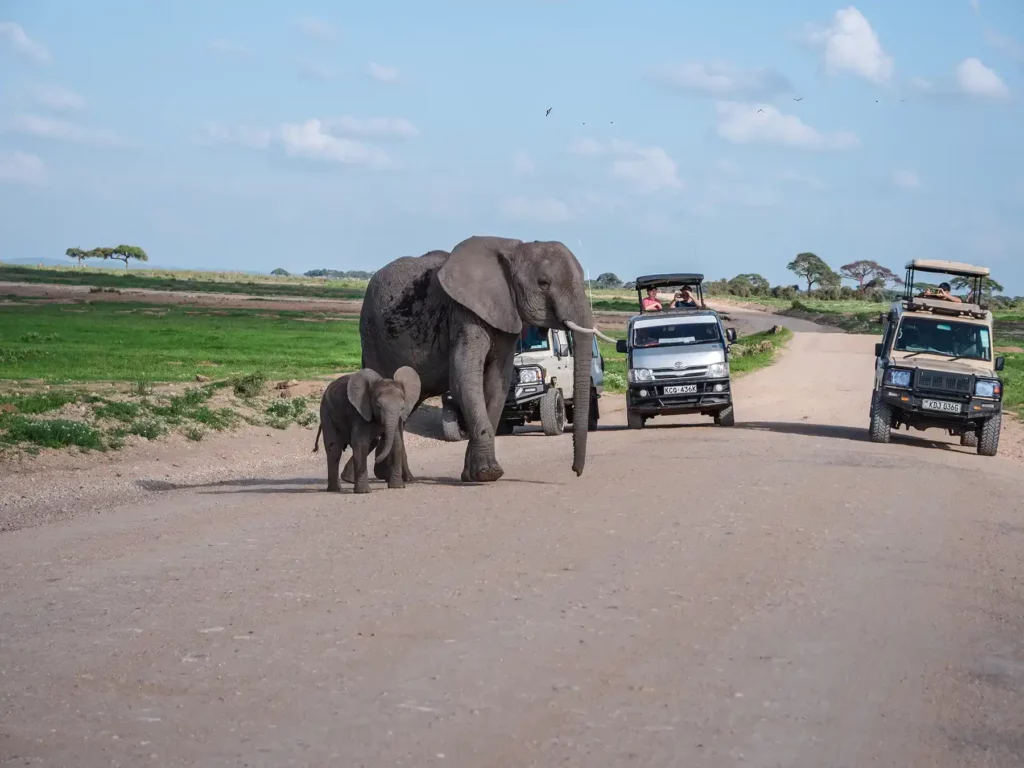
Quick Facts
Average driving time: 3 hours per day
Best times of year: Visit in the dry season between June and October, or January and February for the best wildlife sightings and driving conditions.
Itinerary Map for 3-Day Amboseli Safari Itinerary
Itinerary starts and ends in Nairobi.
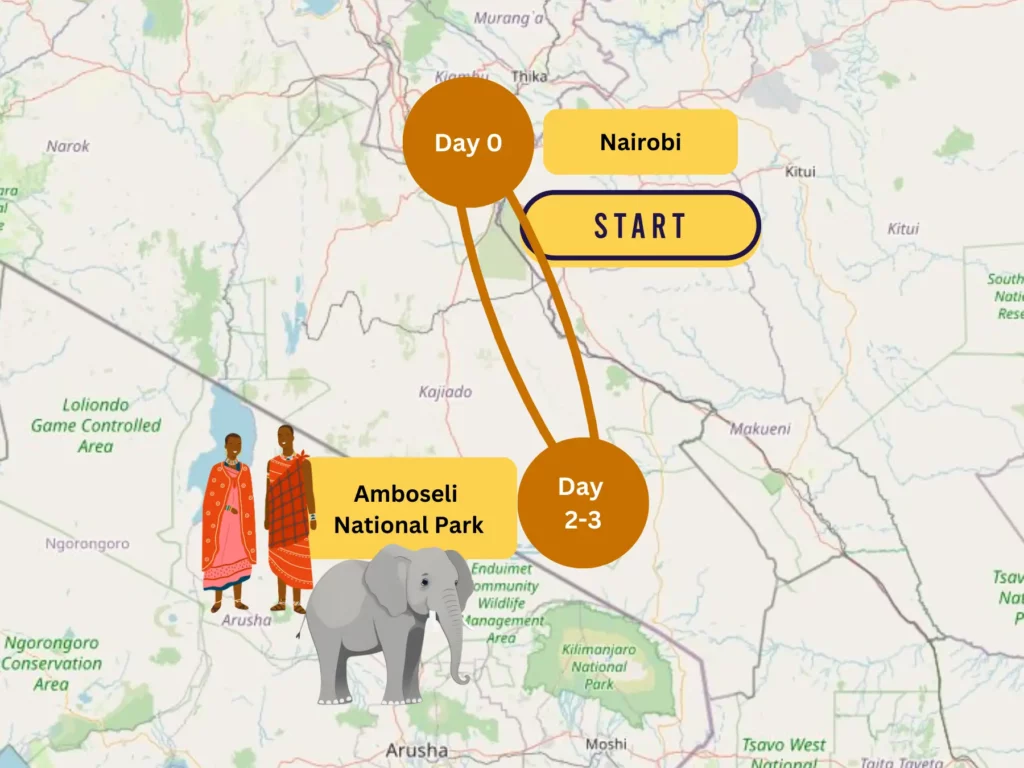
Day By Day Breakdown of 3-Day Amboseli Safari Itinerary
Day 1: Amboseli National Park
Driving time (excluding game drives): 5 hours
Today you’ll have a road transfer from Nairobi to Amboseli, followed by a relaxed lunch at your accommodation. An afternoon game drive introduces you to the national park, with some of the most diverse wildlife viewing in the country.
Itinerary
Depart Nairobi after breakfast for the 5-hour drive to Amboseli. You’ll arrive at the national park in time for lunch, which you’ll enjoy at your lodge after checking in.
In the afternoon, you’ll venture into the national park for a game drive with a local guide. If there’s something specific you’d like to see, just ask. The guides are often happy to try and find particular animals, and you can pick up some tracking tips along the way.
A highlight of the drive might be seeing large elephant herds wandering across the savannah, with Mount Kilimanjaro keeping watch in the background. This spectacle, when the elephants journey from the swamps in the centre of the park to the forests below Kilimanjaro, typically takes place each day at around 5pm.
You’ll spend time at the waterholes too, where the animals congregate in large numbers during the height of the dry season.
About Amboseli National Park
Located in the Rift Valley down in the very south of Kenya, just across the border from Tanzania, Amboseli is one of Africa’s most visited national parks. It’s smaller than many of the other safari destinations, which makes wildlife spotting a breeze, especially during the dry season.
Landscapes here are diverse, so game drives can be quite the adventure. Out on the open semi-arid plains and grasslands, you’ll see the famous elephant herds grazing and moving between water sources. This is one of the most famous sights in Africa, with views stretching out to the horizon.
Big cats roam here in large numbers – you might get lucky and witness a cheetah or lion hunt. Meanwhile, the wetlands are home to crocodiles, pelicans, and waterfowl for a bit of variation. It’s a great spot for bird watching too, especially if you want to spot kingfishers or herons.

Tips for Your Visit to Amboseli National Park
During the dry season, it can get dusty out on the plains in Amboseli, especially if you’re trundling around in a 4X4. Take a scarf and sunglasses to keep the dust out of your hair and face. Despite the heat of the day, it can be cold in the evenings so remember to pack some warmer clothing too.
Mount Kilimanjaro’s peak is often covered by clouds, which can be a little disappointing if you’re hoping for those iconic photos. The skies tend to be clearer during the early morning and late afternoon, so keep an eye on the horizon. If you’re visiting between November and May the air is clear of dust and so the view is clearer. However, it’s also less predictable when the summit will make an appearance, especially if you visit in the peak of the rains.
Where to Spend the Night
There’s a wide range of accommodation options in Amboseli, no matter what your budget or preference. Kenya Wildlife Service runs a handful of self-catering cottages, as well as a campground inside the park where tents and shared bathroom facilities are provided.
For a more traditional 3-day Kenya safari experience, choose one of the privately owned lodges that offer a greater level of luxury and service. You’ll be staying for a couple of nights, so you want to be comfortable.
There are a handful of lodges within the park itself which can be a great choice if you want to be in the park as early and late as possible. However, they are more on the pricey side.
Another great option is to select a lodge or camp just outside Kilma Gate. There are many more options here from budget to luxury and each camp has wonderful views of Kilimanjaro.
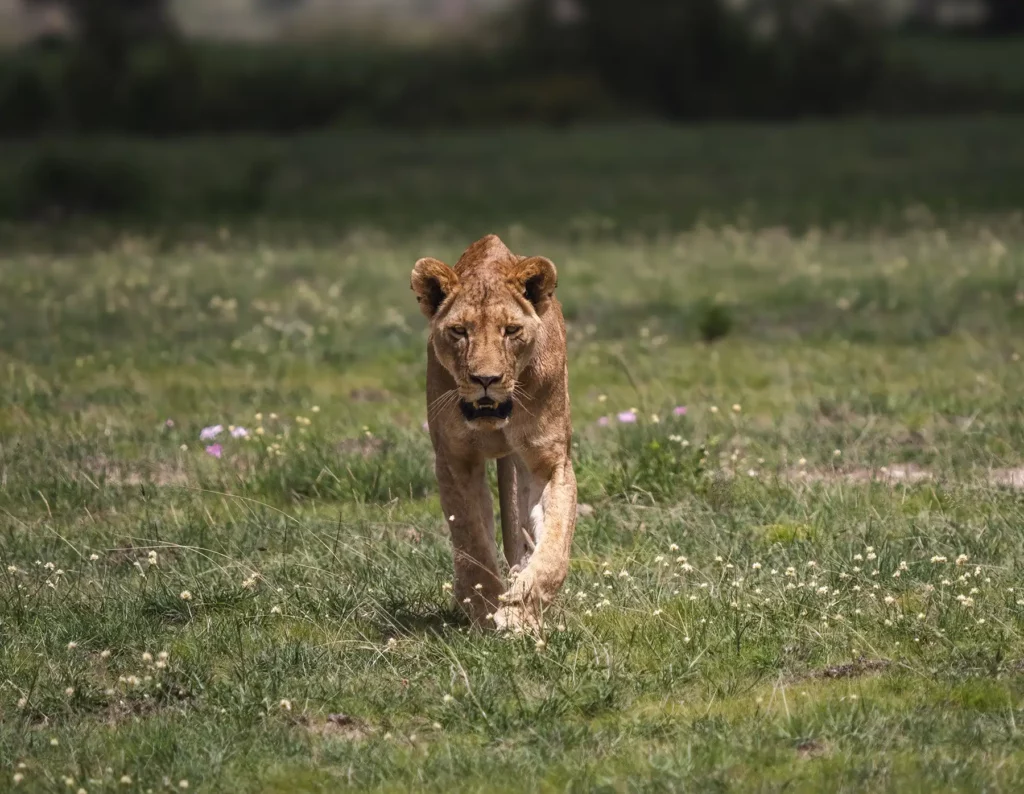
My Personal Experience in Amboseli National Park
The first time I visited Amboseli National Park, I ended up spending 4 nights there.
I’d gone against advice that I’d read online which pretty much always recommends that you visit Amboseli for a single day. Whilst it’s true that you can certainly see a lot in one day, I am so grateful that I spent longer here.
Elephant sightings are pretty predictable in Amboseli as the elephants have strong habits. Each morning between 7am and 8am, the great herds emerge in Amboseli, crossing a number of roads on their journey to the swamps in the centre of the park. They then spend the entire day relaxing at the swamp. Then at around 5pm each evening, they journey back.
Knowing these habits, your guide will know exactly where the elephants are and you can expect to have some wonderful sightings.
A great advantage of staying a little longer in Amboseli is that once you’ve seen an elephant crossing, you can then venture into other parts of the parks at crossing times, escaping the crowds who are all eager to watch the elephants. I did just this and managed to have a cheetah sighting almost entirely to myself.
However, elephants aren’t the only inhabitants of Amboseli. If you spend a little more time in the park you may come across one of Amboseli’s lion prides.
I was extremely lucky that my visit to Amboseli coincided with the birth of a number of litters of lion cubs, meaning the lions had an established den and we could pay them a visit each day, knowing exactly where they were.
It was on my third and fourth day that I saw cheetahs in Amboseli. Had I just visited Amboseli for one day, I wouldn’t have seen these striking big cats at all.

Day 2: Amboseli National Park
Driving time (excluding game drives): 0 hours
Today it’s all about the wildlife, with animals being centre stage on a full-day game drive. You’ll drive across the plains in search of adventure, soaking up the views and enjoying encounters with the wild residents.
You’ll be staying the night at the same lodge, so you won’t need to worry about transfers or spending time on the road. It’ll be a relaxing yet exciting day on safari.
Itinerary
Head out into the bush after a hearty breakfast, with your trusty guide scouting out the best wildlife spots of the day. Lions, giraffes, buffaloes, and of course elephants might all be encountered, along with many other species.
Some operators offer a nature walk just outside the national park as part of the day’s safari activities – do ask in advance if this is something you would like to do. This is a great way to feel closer to nature and experience the wild at its rawest.
Enjoy an al-fresco bush lunch atop Observation Hill with a view of Mount Kilimanjaro and perhaps some plains game grazing in the distance. This is a great time to swap stories with your guide and learn more about their community and culture. Sometimes they’ll have hair-raising tales about wildlife encounters to tell!
Spend the afternoon driving through the plains and along the riverbanks in search of animals, who may be dozing in the shade during the heat of the day. Then it’s time to return to your lodge for sundowners and an evening meal.
Where to Spend the Night
You’ll stay at the same lodge for both nights during this trip, to keep things convenient and comfortable.

Day 3: Maasai Tribe & Drive to Nairobi
Driving time (excluding game drives): 5 hours
It’s your final day in Amboseli National Park, so make the most of your time here by visiting one of the local Maasai communities. Amboseli isn’t just about the wildlife! In the afternoon you’ll drive back to Nairobi ready for your onward adventures.
Itinerary
After your final breakfast in Amboseli, you’ll visit one of the Maasai villages that sit near the boundary of the national park. This is your chance to learn more about Maasai society, and you’ll walk through the settlement with a local warrior, who will tell stories and teach you about the way of life in this remote region.
A Maasai visit is a unique opportunity to interact with tribal members, have a go at milking cows, and perhaps buy some souvenir jewellery to take home. You’ll be welcomed with dances and songs – feel free to join in if you wish.
At the end of your village visit you’ll jump back in your 4×4 and hit the road again, this time back to Nairobi. The journey takes around 5 hours depending on traffic, so you’ll be back in the city during the afternoon.
About the Maasai Tribe
The Maasai are the most famous tribe in Kenya, and indeed all of Africa. They are semi-nomadic livestock herders who live mainly in southern Kenya and northern Tanzania.
Society is traditional, with the men spending their days out in the bush, looking after the cattle and keeping the herds close to water sources. Warriors often have multiple wives, resulting in large families and a communal atmosphere.
Many Maasai wear bright red clothing, a vivid symbol of their culture. The colour signifies bravery and some say it helps to scare animals away too. Other colours are worn too, each with their own meaning. Orange represents hospitality, white is for purity, and green shows a connection to the land.

Tips for Your Visit to the Maasai Tribe
Maasai communities are very traditional, with the men and boys tending the livestock and the women and girls staying home. It’s important not to impose “Western values” onto these communities and respect that society here is very different to what you might experience back home.
Many Maasai are very friendly and happy for their photo to be taken, but always ask permission first. You’ll find that younger community members are usually more obliging. Try to engage them in conversation for a while before whipping out the camera.
One of the best ways to interact with the Maasai people is to ask questions about their culture. They’re very proud of their identity and love sharing their stories and traditions with visitors.
Where to Spend the Night
Tonight you’ll stay in Nairobi unless you’re flying out this evening. If you have an early flight the next morning, it’s advisable to book an airport hotel to avoid the busy traffic that often clogs up the city centre.
My Personal Experience with the Maasai Tribe
I always love to visit a Maasai boma when in Kenya. The Maasai have such a unique and beautiful culture and their hospitality is second to none.
I’ve heard that not all Maasai experiences are created equal and some visitors complain about some villages feeling inauthentic and like a tourist trap. I have personally not had this experience myself but I won’t discredit their experiences. These reports tend to come from the Masai Mara, likely due to the high volume of tourists there having an impact on villages. Naturally I think you are more likely to have an authentic experience near Amboseli as not as many tourists come here. Still, you may wish to make a request with your tour operator to visit a less-visited boma to ensure you have the most authentic experience.
When visiting the Maasai don’t be afraid to get involved. Every boma I have visited has invited me to join in with some dancing and you can tell they love to share their culture with you in this way.
Itinerary Costs
Prices for this 3-day Kenya itinerary start at $300 per person for a full board safari on a private basis. Cheaper tours are available if you opt for a shared experience. Prices assume that you’re travelling with a local safari operator, with final rates depending on the level of accommodation chosen, the season, and the number of guests in the safari vehicle.
If you’ve booked a package tour, then park fees are normally included in the price. However, for anyone travelling independently, the Amboseli National Park entrance costs $60 per person per day, so remember to include this in your planning.
Wet season prices are considerably lower than during the high season, so come between November and May to bag a bargain. It will be wet, but especially in November it doesn’t rain all day, so you’ll have plenty of opportunities to see the wildlife. Bird watching is best at this time of year, when the migratory flocks arrive, and the skies are clear of dust leaving superb views of Mount Kilimanjaro.
Recommended Booking Options For Your 3 Day Amboseli National Park Itinerary
Private Safari
Most popular & best experience – typical prices for this itinerary start from $300 per person per day.
Visit safarisbyella.com for free quotes from trustworthy local tour companies I use to book my own trips.

Group (Shared) Safari – Usually Camping
Good for budget or solo travellers – from $120 per person per day.
My recommended Tanzania tour operators only provide private safaris, however, I’ve listed the best and most similar group options for this itinerary, on SafariBookings below.
Click the link below to request quotes for the group safari options on the SafariBookings website.
3-Day Budget Group Safari (Option 1)
3-Day Budget Group Safari (Option 2)
View All My Recommended Group Options Following a Similar Itinerary
Jump back to the table of contents to select another 3 day itinerary to view or keep scrolling to read the next itinerary.
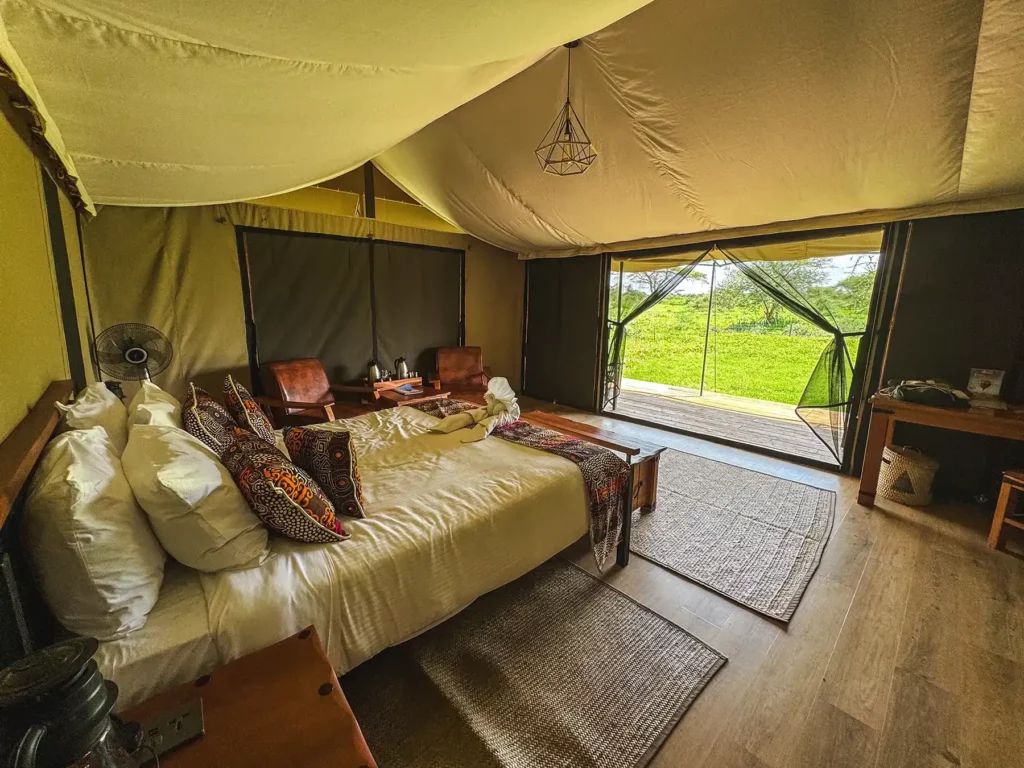
Option 5
3-Day Kenya Highlights Fly-In Safari Itinerary
This 3-day Kenya safari itinerary takes in the Masai Mara and Amboseli, two of the country’s best wildlife destinations. It’s a fly-in safari, which means you’ll travel between the locations by plane.
Fly-in safaris are more expensive than road-based itineraries, but by cutting down your travel time you’ll be able to spend longer in the parks. Plus, you’ll get to see the varied landscapes of Kenya from the air, which elevates your adventure even further.

Quick Facts
Average driving time: 0 hours per day
Best times of year: You can enjoy this trip all year round. However, the long dry season between June and October is the best time to visit these parks for pleasant weather and easy wildlife viewing. To see the Great Migration at its peak in the Masai Mara, aim for July or August.
Itinerary Map for 3-Day Kenya Highlights Fly-In Safari Itinerary
Itinerary starts and ends in Nairobi.

Day By Day Breakdown of 3-Day Kenya Highlights Fly-In Safari Itinerary
Day 1: Masai Mara National Reserve
Driving time (excluding game drives): 0 hours
Today you’ll leave Nairobi and fly to the Masai Mara and enjoy an afternoon exploring the bush. Travelling by air means no long road transfers so you’ll arrive at your destination in no time.
Itinerary
Your adventure begins with a thrilling internal flight from Nairobi Wilson Airport to Masai Mara National Reserve. You’ll be flying in a small plane, often a Cessna Caravan, with just a few other passengers so it’ll feel like quite an exclusive experience. The trip takes an hour, giving you plenty of time to enjoy the scenery and take photos out of the windows.
The Masai Mara has several bush airstrips, so you’ll land at the one closest to your lodge. Your plane might stop at several different places for other passengers to get on and off, just like a bus. Don’t worry, the pilot will tell you who needs to alight at each spot.
Your driver guide will meet you at the strip and drive you through the reserve to your accommodation. The journey is like having a bonus safari – you might see several animals along the way.
After checking in you’ll have time to explore the lodge and enjoy some lunch before heading out for an afternoon game drive. You’ll ride in an open-sided safari vehicle, giving you the perfect vantage point for wildlife viewing. Your guide will try and find the animals you most want to see, whether that’s a pride of lions and their cubs, a herd of elephants, or a clan of hyenas.
About the Masai Mara National Reserve
The Masai Mara National Reserve is the most famous safari destination in Africa. Wildlife is abundant and the Big Five are all present here: lions, elephants, cape buffalos, leopards, and rhinos. The latter are hard to spot, but the other four are frequently seen.
Conservation efforts work in harmony with the local Maasai communities to ensure that their traditional way of life can continue to operate with minimal human-animal conflict. Visits to villages can be arranged if you want to learn more about the Maasai culture.
Along with the Serengeti in Tanzania, the Masai Mara is one of the best places to witness the Great Migration. This is when millions of wildebeest, zebra, and other plains game arrive in the Masai Mara to graze on the lush green grass. You might even get to see the herds braving the snapping jaws of crocodiles as they battle across the Mara River. The best time to see this spectacle is between July and the end of September.
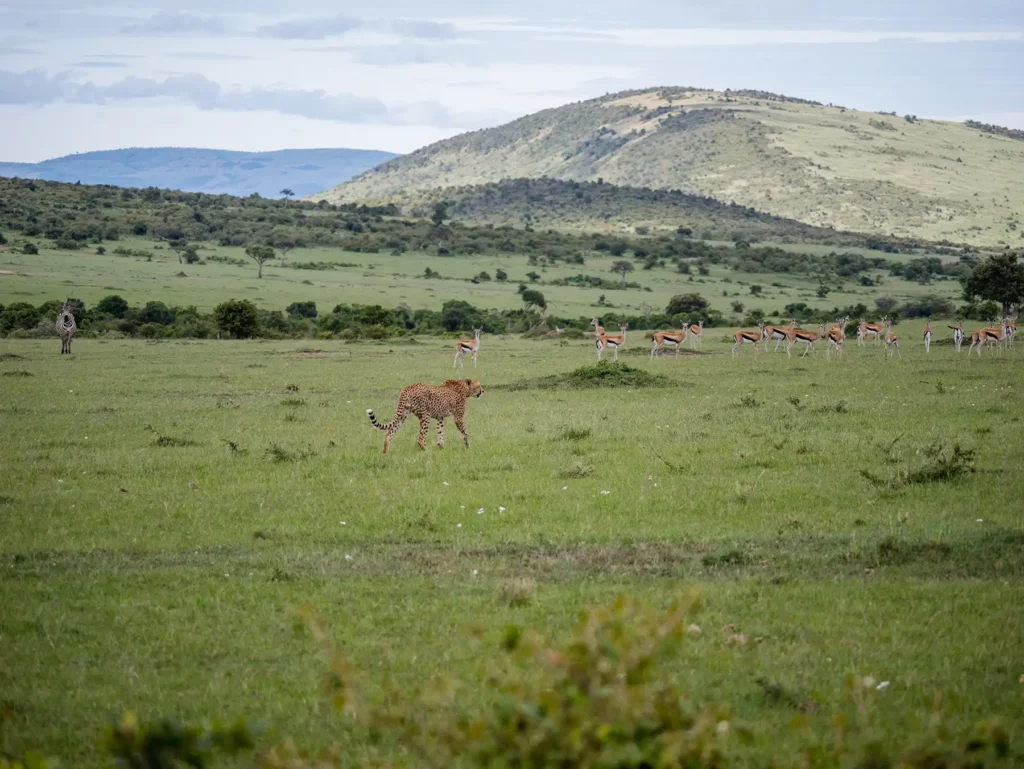
Tips for Your Visit to the Masai Mara National Reserve
If you want to see the Great Migration in the Masai Mara, it’s important to book your lodge and flights well in advance. Places fill up quickly as this is peak season, so don’t leave it too late.
There are several private conservancies around the edge of the Masai Mara National Reserve. These feel more exclusive than the park itself because only visitors staying in the conservancy lodges can go on game drives in these areas.
Accommodation in the conservancies tends to be more expensive, but staying here is a great way to avoid the crowds and enjoy animal encounters to yourself, rather than having to share with dozens of other safari vehicles.
Where to Spend the Night
There’s a huge range of accommodation to choose from in and around the Masai Mara. You’ll find budget camps, guest houses and lodges outside the reserve in Sekenani and Ololaimutiek Village. By staying here, you can potentially cut down on park fees by only paying for the days when you enter.
Inside the reserve, there are lodges and tented camps for all budgets. The Masai Mara is also known for its mobile camps, which move strategically with the Great Migration to give you premium viewing opportunities. This is a true wilderness experience!
My Personal Experience with the Masai Mara National Reserve
The Masai Mara is one of the most famous wildlife destinations in the world for a reason. It has an abundance of wildlife and is one of the best places to see big cats – my absolute favourites!
I’ve had so many incredible big cat sightings on my visits to the Masai Mara. One that stands out to me is of a mother cheetah and her four adorable cubs – watching them play was a truly heartwarming moment. Another peak experience was when I stumbled across a majestic leopard feeding in a tree. I couldn’t believe my luck when she leapt down from the tree, kill in her jaws, and began feeding right by my vehicle!
I have also been fortunate enough to spot a black rhino within the Masai Mara. I felt like pinching myself as I gazed at the magnificent animal, horn pointing towards the sky. As there are only about 30 individuals left in the Masai Mara, this was a truly magical moment.
You can watch a video of my Masai Mara experience on YouTube.
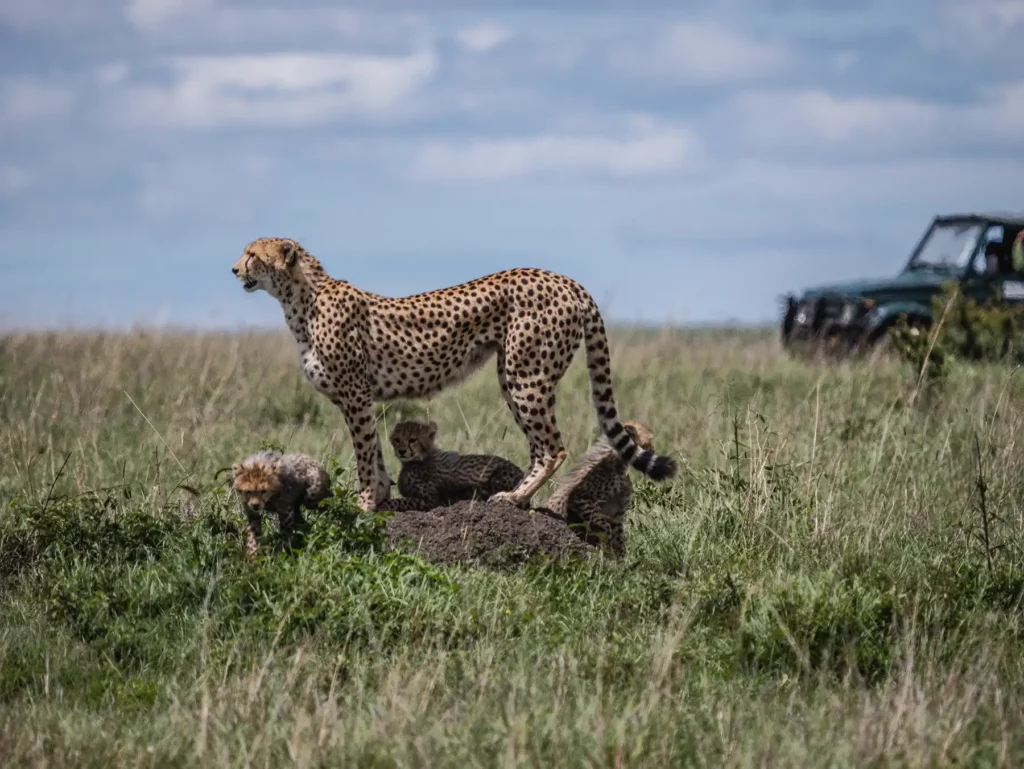
Day 2: Masai Mara to Amboseli
Driving time (excluding game drives): 0 hours
This morning you’ll enjoy a last game drive in the Masai Mara before taking a short flight down to Amboseli. Then it’s into the bush with an afternoon game drive to soak up the dramatic landscapes and search for elephant herds crossing the plains.
Itinerary
Start the day off on a high with another game drive in the Masai Mara. Animals are at their most active during the mornings so you never know what you might find. Want to see a cheetah? Let your guide know and they’ll do their best to track one down.
Your guide will then drive you to the airstrip, where you’ll board another bush plane for the 1-hour flight to Amboseli. Keep your camera handy for aerial views of the Great Rift Valley and Mount Kilimanjaro on the way.
On arrival in Amboseli, you’ll be collected from the airstrip and transferred to your accommodation. The afternoon is all about exploring the national park, with a game drive taking you deep into the wilderness in search of wildlife.
About Amboseli National Park
Amboseli sits down in southern Kenya, just over the border from Tanzania. It’s famous for the large herds of elephants that roam the savannahs, and the iconic views of Mount Kilimanjaro in the distance.
The elephants in Amboseli are unique – having huge tusks compared to anywhere else in Africa. The world’s last remaining Big Tusker elephants can be found here, their tusks so long that they almost scrape the ground.
The park is a popular choice for first safaris, thanks to its dense wildlife and spectacular setting. This is one of the best places in Kenya to see some big cat action, with lion and cheetah hunts regularly witnessed.

Tips for Your Visit to Amboseli National Park
Amboseli is the place to go if you want to see the famous super tusker elephants. They’re now a rare sight in Africa so it’s quite a privilege if you manage to spot them.
Mount Kilimanjaro is often covered in clouds which can be a little disappointing for taking photos. You’ll find early mornings and late afternoons offer the best chances of clear skies.
Where to Spend the Night
You’ll stay inside the park, either in a safari lodge or a tented wilderness camp. For upscale accommodation, choose one of the privately owned lodges but remember that cheaper places can have the same incredible views of Mount Kilimanjaro.
My Personal Experience in Amboseli National Park
Amboseli National Park will always hold a special place in my heart because of the incredible sightings that I’ve had here. Not only did I see huge herds of elephants crossing the road right in front of me, I cooed at baby lion cubs and watched in awe as a cheetah successfully took down a gazelle, only to have to defend her kill against a hyena.
There’s so much wildlife to be seen in Amboseli! And one of the things that I loved the most about it was that it wasn’t as busy as the famous Masai Mara, making sightings more intimate and special.
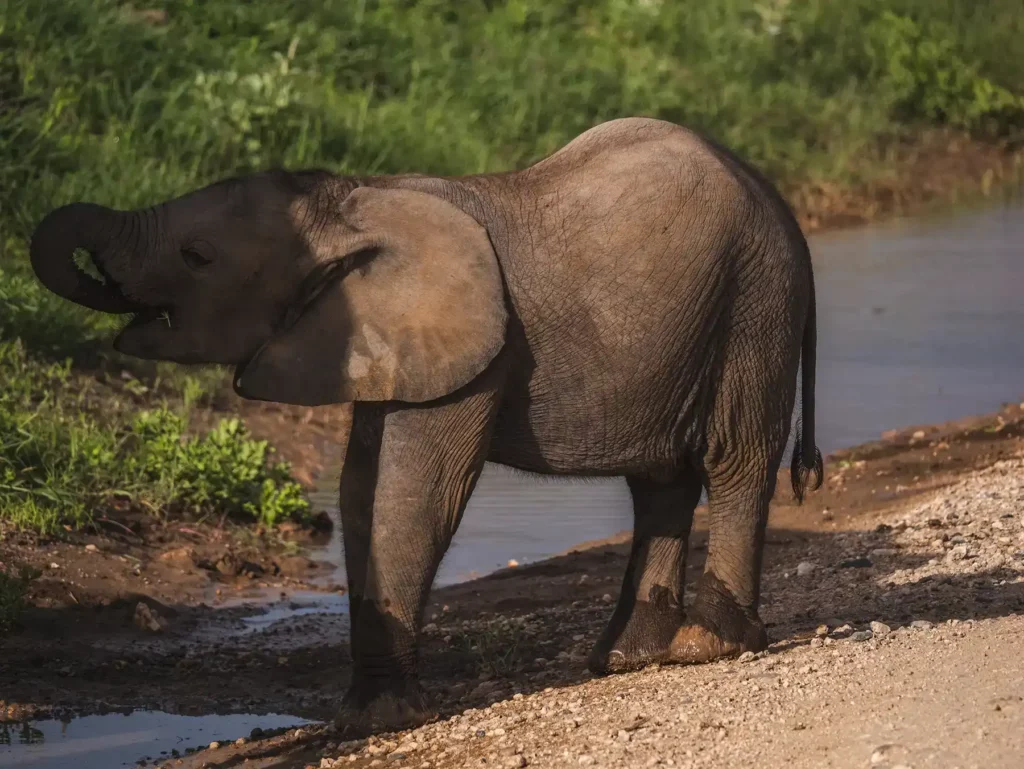
Day 3: Amboseli National Park
Driving time (excluding game drives): 0 hours
Enjoy a final game drive this morning before flying back to Nairobi after an action-packed 3 days in the bush. Amboseli isn’t far from the capital which reduces transfer time, so you won’t feel like you’re rushing around.
Itinerary
You’ll head out early into the national park with your guide, to watch the sun rising over the savannah from the comfort of your safari vehicle. As the bush slowly begins to warm up, you’ll explore the plains, wetlands, and woods to tick off a few more animal sightings.
Then it’s time to head back to the airstrip for your flight to Nairobi. It takes just an hour to reach the city, so you’ll be there in the early afternoon.
If you’re not catching an onward flight, you’ll have a bit of time to explore Nairobi. Discover the real ‘Out of Africa’ story at the Karen Blixen Museum, shop for souvenirs at the Village Market, or eat out at one of the city’s vibrant restaurants.
Where to Spend the Night
Unless you’re flying home this evening you’ll stay the night in Nairobi, which has a range of guest houses, mid-range hotels and luxury residences. To be close to the airport, look at options in the Mombasa Road area, or for a peaceful stay in a posh suburb, the leafy Karen neighbourhood is a good choice.
Itinerary Costs
This is without a doubt the most expensive itinerary on my list. Starting prices will be around $600 per person per day for a full board private safari. This is based on booking with a local operator, with prices varying depending on accommodation level and number of safari truck passengers.
The 3 internal flights make this the most expensive of these 3-day Kenya safaris. Flights cost more during the dry seasons, which run from December to March and between July and October. You’ll save money by flying outside these months, and whilst the weather can be unpredictable in the low season, wildlife is still abundant, and the parks will be less crowded.
Single flights from Nairobi to Masai Mara cost $240 per person during high season and $180 in low season. The flight from Masai Mara to Amboseli is more expensive at around $420 all year round, while the Amboseli to Nairobi route costs $200 in high season and $145 in low season. All flights are non-stop and take about an hour.
As with all trips, the time of year has a big impact on price. This is especially true with Masai Mara safaris, as the already high park fees double in price during the peak season. Entry into the reserve costs $100 per person per day between January and June (low season) and $200 per person per day between July and December (high season).
Recommended Booking Options For Your 3 Day Fly-in Safari Itinerary
Private Safari
Most popular & best experience – typical prices for this itinerary start from $ per person per day.
Visit safarisbyella.com for free quotes from trustworthy local tour companies I use to book my own trips.

Jump back to the table of contents to select another 3 day itinerary.
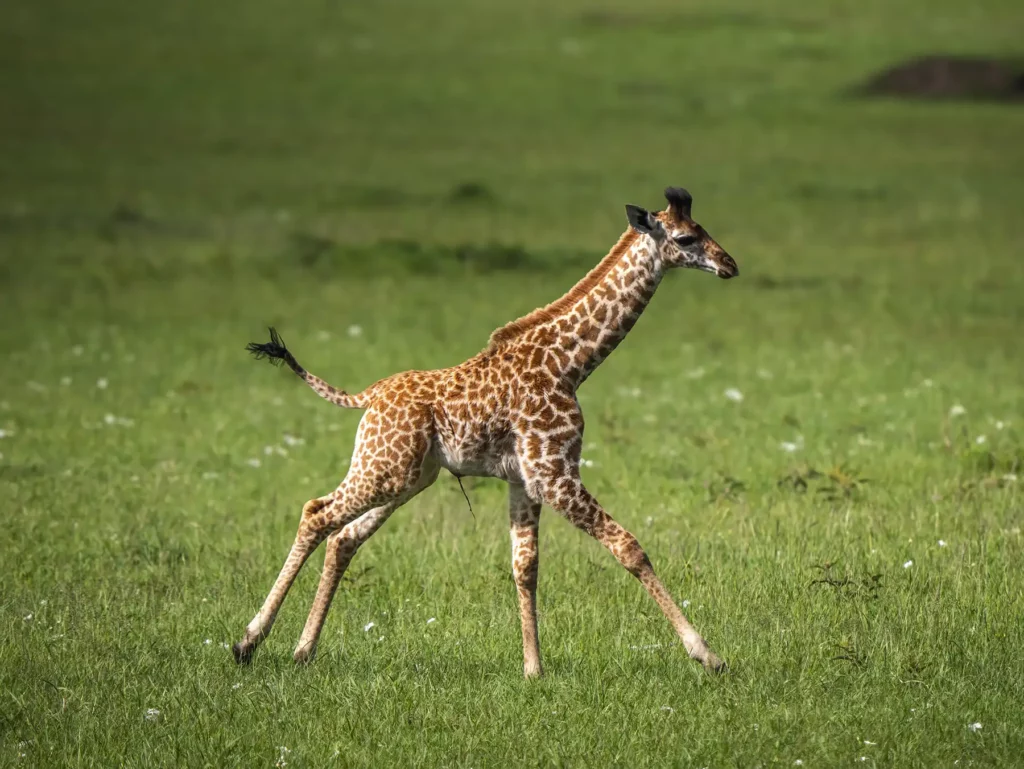
Is 3 Days Enough in Kenya?
Yes, it’s certainly possible to have a great 3-day safari in Kenya.
However, if time and budget allow, a 7-10 Kenya safari itinerary is the ultimate way to experience the wildlife and landscapes of this beautiful East African country. Want to include some beach time on the coast or even a visit to Zanzibar after your safari? Then a 2-week Kenya itinerary or a combined 2-week Kenya and Tanzania itinerary is the way forward.
However, if you have a set budget or limited time to play with, then you can still see and do a lot in just 3 days. The wildlife density in Kenya’s most popular parks and the short driving distance between Nairobi and places like Lake Naivasha and Tsavo West make a 3-day road trip both manageable and fun-packed.
If you have the budget for it, a fly-in safari saves on travel time giving you longer in your chosen destinations. This is a great way to make the most of your 3 days and the scenic flights are sightseeing excursions in themselves.
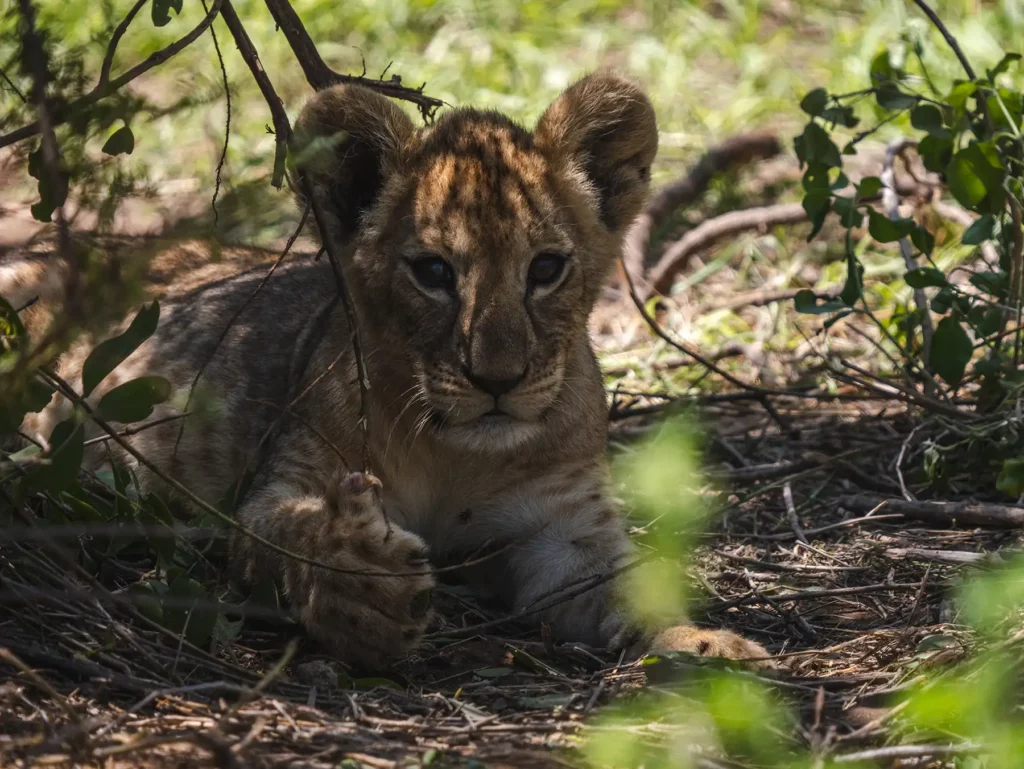
How to Book a 3 day Safari Itinerary in Kenya?
There are three ways you can arrange a 3-day Kenya safari itinerary. You can organise it yourself, book through a local operator, or use an international travel agent.
Self-driving is an adventurous and budget-friendly option for independent travellers in Kenya, but it’s far easier and safer to go with a reputable safari operator.
Local Kenya Safari Companies
For the most competitive rates and on-the-ground expertise, it’s best to book your trip through a local safari operator. They often have special agreements with hotels and lodges for lower rates than would be publicly available, with the savings always passed onto you. They also don’t have the high overheads of international agents, with profit margins usually 15% or less, thereby keeping costs lower and offering better value to you.
These companies have their ear to the ground with up-to-date information about wildlife viewing at their fingertips thanks to the extensive local communication networks. If you’re keen to see the Great Migration, going local is your best bet.
By booking through a local safari company, you’re also directly supporting Kenyan communities, which is how it should be. Make sure you read reviews from other travellers as some operators are better than others.
How to Book with the Best Local Safari Companies
- Comparison sites which provide multiple quotes from verified suppliers such as Safaris By Ella
Join the rapidly growing tribe of over 1,000 travellers who’ve booked their dream safari using my insider tips and recommendations.
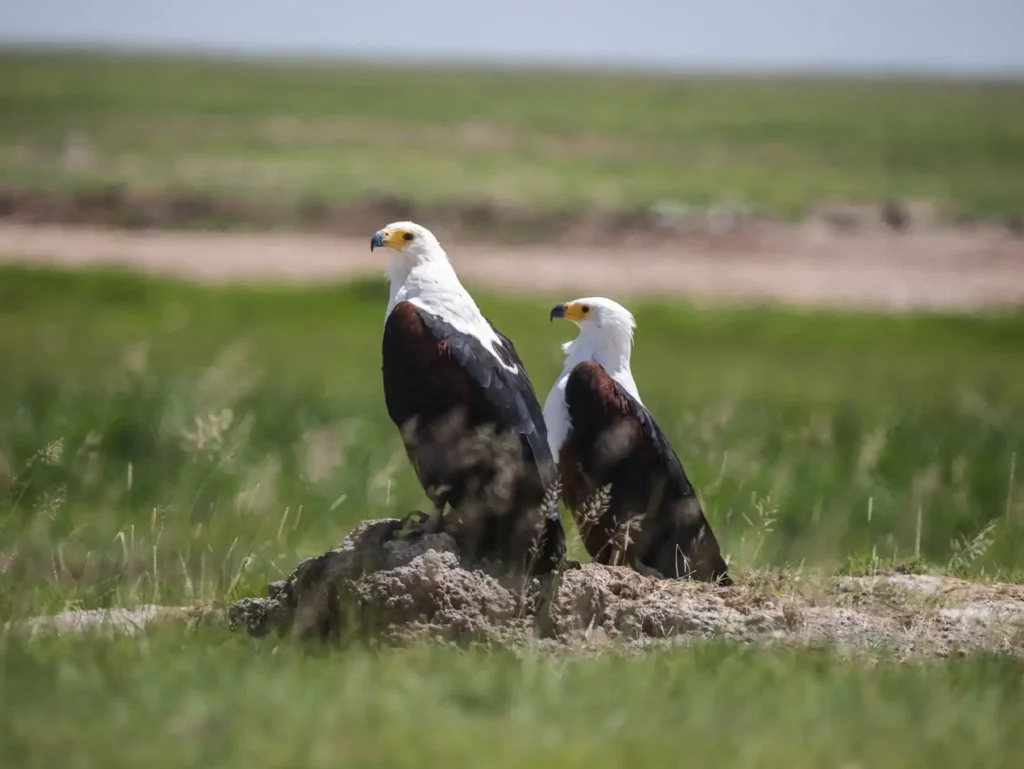
International Travel Agents
You might be more comfortable booking your safari through a well-known international travel agent, based in your home country. They will arrange your international flights, offer purchase protection, and can accommodate all manner of holiday requests that a local operator may not provide.
Yet remember that international agents usually add a hefty commission (sometimes up to 300%) to the local operator prices, so you’ll end up paying more.
These agents usually subcontract their safaris to local companies, so you may as well book with the Kenyan operator and save yourself some money. By cutting out the “middle man” you’ll also be communicating directly with the people who will be organising your safari, which can make things run smoother.
How to Book Your Safari with an International Travel Agent / Safari Company
- Comparison sites which provide multiple quotes from verified suppliers such as Safaris By Ella. When you select a luxury budget on the quote request, you will receive a quote from my recommended International safari company as well as my recommended local companies for comparison.
Join the rapidly growing tribe of over 1,000 travellers who’ve booked their dream safari using my insider tips and recommendations.
Private vs Group Kenya 3 day Safaris
Private Kenya safaris
The ultimate way to experience a Kenya safari is to book a private tour. This is especially important for the game drive element when you’ll have an exclusive vehicle and driver guide. Your safari will be tailored to your interests – if you’re desperate to see your first leopard, your guide will make it their mission to find one.
Having your own safari truck also means you won’t have to wait for other passengers who might be late emerging from their rooms in the mornings. Sometimes on private safaris, the guides are more inclined to stay out in the bush a little later than normal if you’re enjoying a particularly exciting wildlife encounter.
Another benefit of private Kenya safaris is having your own space. If you’re not particularly sociable and don’t want to be spending a lot of time each day with the other lodge guests, then booking exclusive game drives is a must. Plus, you’ll get to sit where you want in the safari vehicle, rather than having to share the top spots.
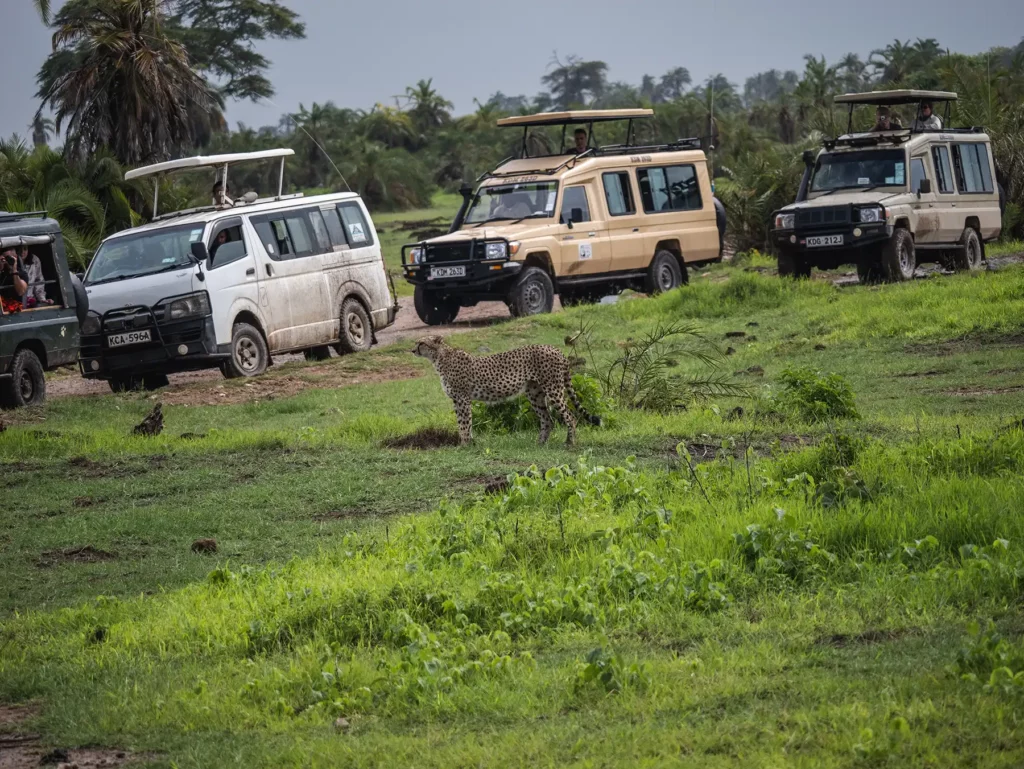
Group or shared safaris
Aside from the obvious cost benefit, there are other bonuses to shared safaris. These types of holidays are convivial experiences, often with communal dinners so you’ll get to know your fellow guests pretty well.
By joining a game drive with other passengers it’s easier to form relationships through your shared experiences, making the whole stay more like a holiday with friends.
Of course, this can work both ways and if you don’t have much in common with the other guests, it can feel a bit awkward. Yet you’re all here to see the animals, which never fail to steal the show.
Group safaris are particularly great for solo travellers as there are huge cost savings involved and you get to connect with fellow travellers.
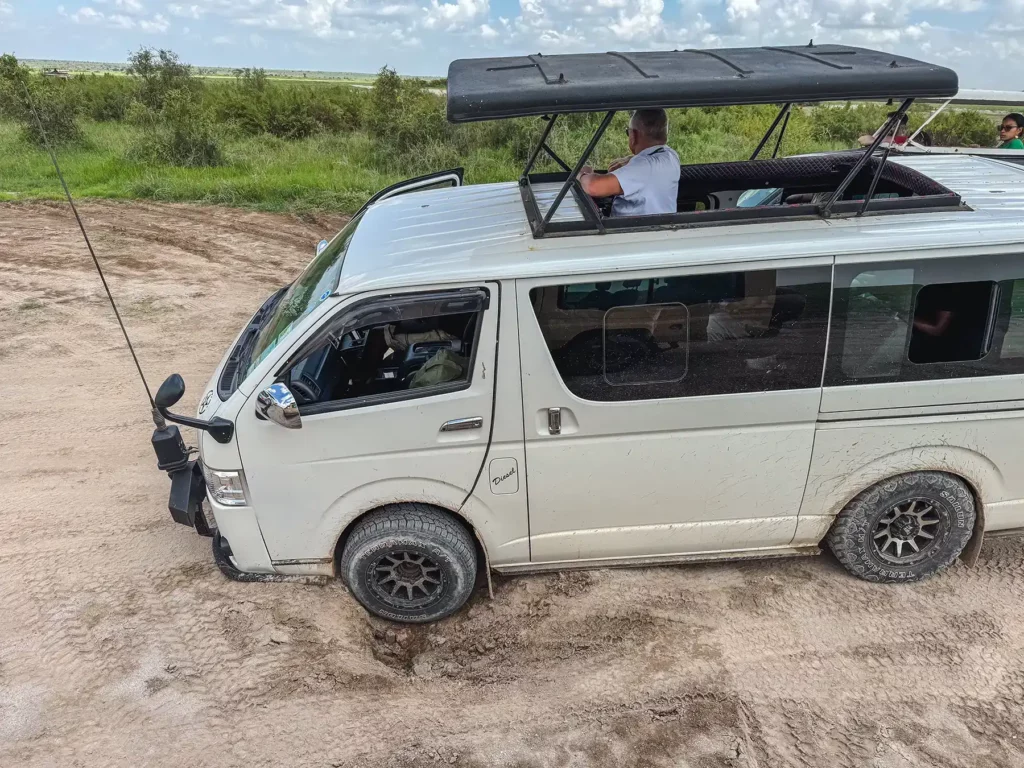
How Much Does a 3 day Kenya Safari Itinerary Cost?
Safaris aren’t cheap, but they’re rewarding and often seen as a once-in-a-lifetime experience. Kenya is one of the best places in Africa to enjoy a safari, and a trip here can often cost less than a similar tour in places like Botswana or Tanzania, although the price gap is reducing thanks to the rise in Kenya’s park fees.
Kenya safari costs vary greatly, depending on the level of accommodation you choose. A standard private safari in Kenya is around $300 per person per day for a budget trip, $400 for a mid-range tour, and about $600 for a luxury experience. These prices are all-inclusive, covering full board accommodation, exclusive game drives, park fees, vehicle, guide, and taxes.
If you’d prefer something cheaper, consider booking a shared safari and save up to 27% compared to a private trip. These group safaris start at around $220 per person per day based on shared game drives and budget camping with communal bathrooms. This is a great option if you’re a solo traveller as single supplements on private safaris can be very expensive.
National park fees can account for up to 30% of your safari cost, which is something to bear in mind when choosing your destination. Some parks are more expensive than others, with the Masai Mara costing the most in terms of entry. To save money, consider reducing the number of days in the park, or choosing a different reserve that has lower entrance rates.
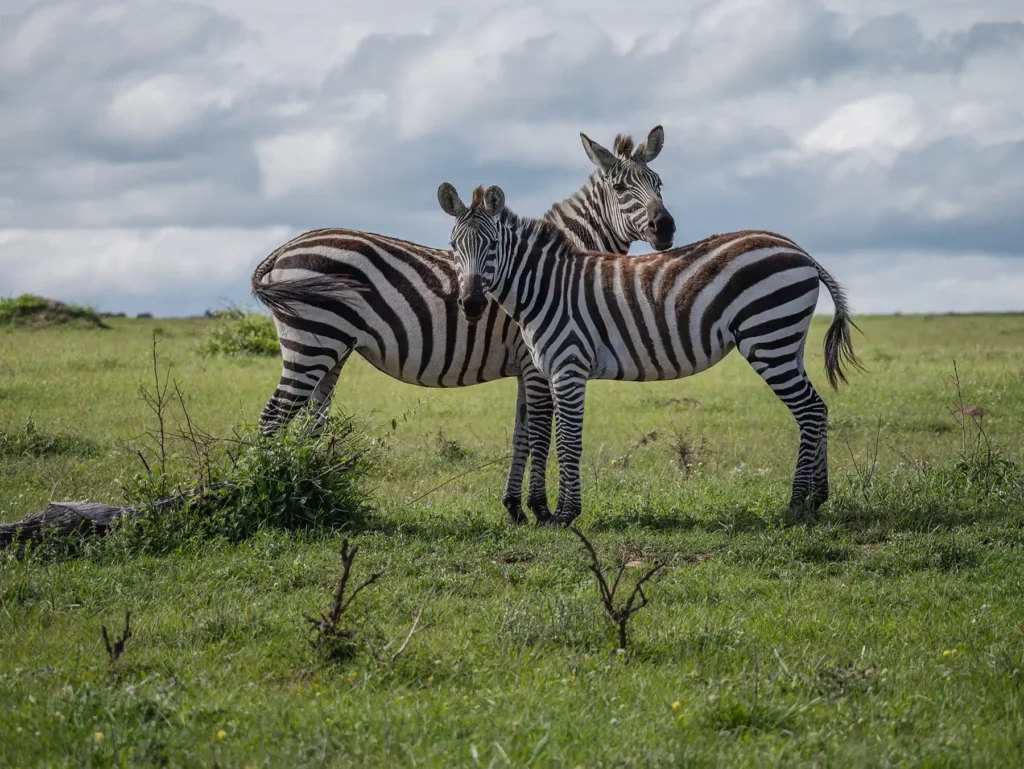
The seasons also have an impact on cost. Whilst the dry season between June and October is undoubtedly the best time for a safari, this is also when you’ll pay the highest prices, especially if you’re here in July or August for the Great Migration.
Visiting Kenya during the shoulder months of January, February, November, and December can be a good compromise, with lower rates, fewer crowds, and unexpected adventures. Some places remain open during the wet season, but bear in mind that travel becomes more difficult and sometimes impossible. Animal viewing is also much harder, so this isn’t the best time for a safari.
It’s cheaper to do a road-based tour, but fly-in safaris avoid the long drives and it’s thrilling to see Kenya from the air if you can stretch your budget. Flights can cost between $200 and $420 per person for a single peak season journey, which can add up, especially if you’re visiting more than one park.
You do have the option of self-drive safaris in many of Kenya’s national parks (excluding the Masai Mara where self-driving is banned from June 2024), and these are cheaper than using a local operator. However, it doesn’t cost much more to pay for a driver guide, which will make for a more relaxing and safer experience with better animal sightings.
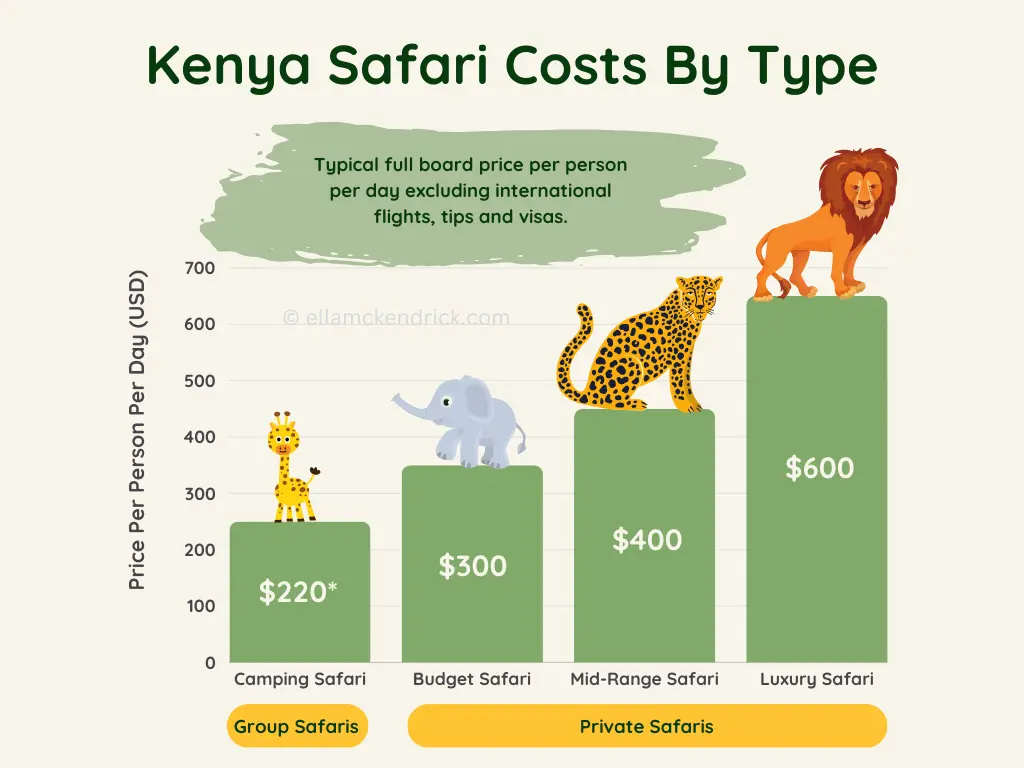
Kenya Safari Tips & Tricks
Remember that on Kenya safaris, you tend to get what you pay for. You might save money by booking a budget trip, but this will be reflected in the standard of accommodation and safari vehicle. Cheaper operators often use minibuses instead of open-sided 4x4s, which makes wildlife viewing harder and less enjoyable. If this is important to you, make sure you know what you’re signing up for.
If you are taking an internal flight, most carriers have a strict baggage weight limit, which is just 15kg with both Safarilink and Air Kenya. So, pack light, and use soft-sided bags rather than hard cases.
Need to do some laundry whilst you’re on safari? Most lodges offer this service but be aware that for cultural reasons some may not wash women’s underwear, so don’t skimp when packing your knickers!
A Maasai cultural experience is an integral part of any 3-day Kenya safari, but it’s important to pick the right one. Some visits feel too commercialised and inauthentic so make sure you clarify with your operator that you’re looking for a more immersive experience away from the main tourist centres.
Tipping is part of Kenya’s culture and is usually done in USD. A tip of $10 per person per day is standard for a driver guide, but feel free to give more if you’ve had a great time. Accommodation tipping is entirely at your own discretion, with $5 per person per night considered a good guideline.
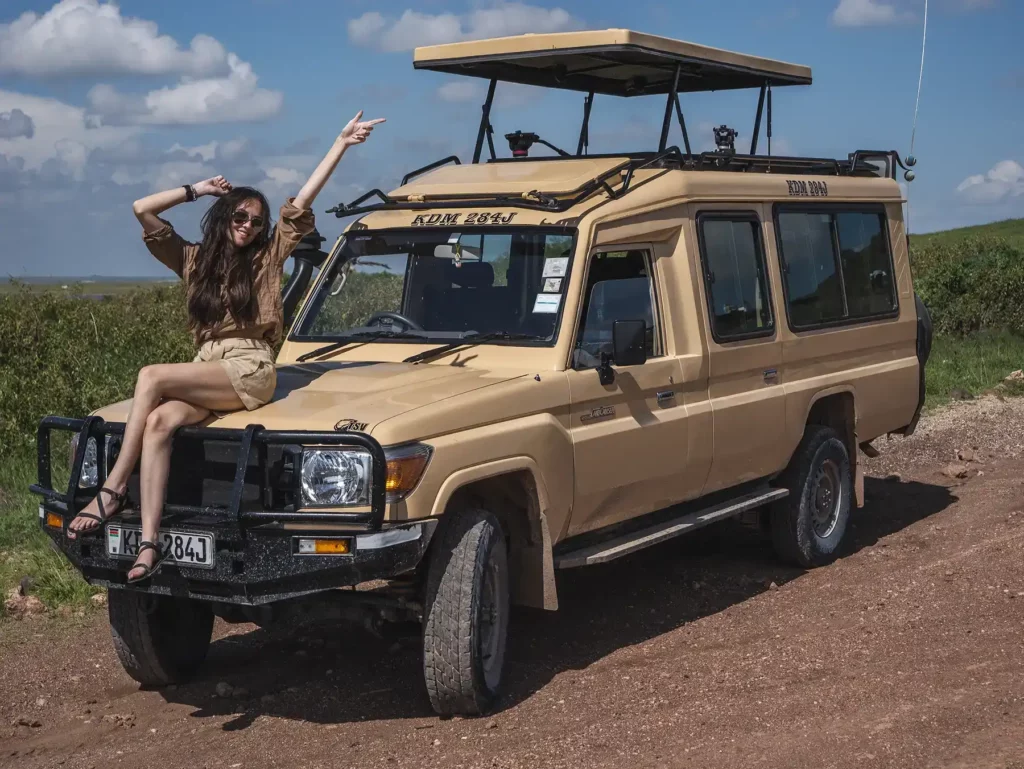
Read More Kenya Guides
Kenya Itineraries
Recomended itineraries and how to book them.
7-10-Day Kenya Safari Itinerary
3 Day Kenya Safari Itinerary & Costs
2-Week Kenya Safari Itinerary & Costs
3-Week Kenya Safari Itinerary & Costs
Kenya & Tanzania Itineraries
Multi-country itineraries and how to book them.
10-Day Kenya and Tanzania Safari Itinerary
2-Week Kenya & Tanzania Safari Itinerary
Costs & Planning
How to get the most bang for your buck and the best time of year to visit depending on what you want to do and see.
Kenya Safari Costs – Everything you Need to Know
The Great Wildebeest Migration Guide
National Parks & Reserves
Complete guides to the best and most famous safari reserves, including the wildlife you’ll see, entrance costs and best time to visit.
Coming soon.
Other Popular Safari Destinations
How to Book Your Safari
Save time and ensure an incredible safari experience by getting quotes from my recommended local safari companies.
Join the rapidly growing tribe of over 1,000 travellers who’ve booked their dream safari using my insider tips and recommendations.

